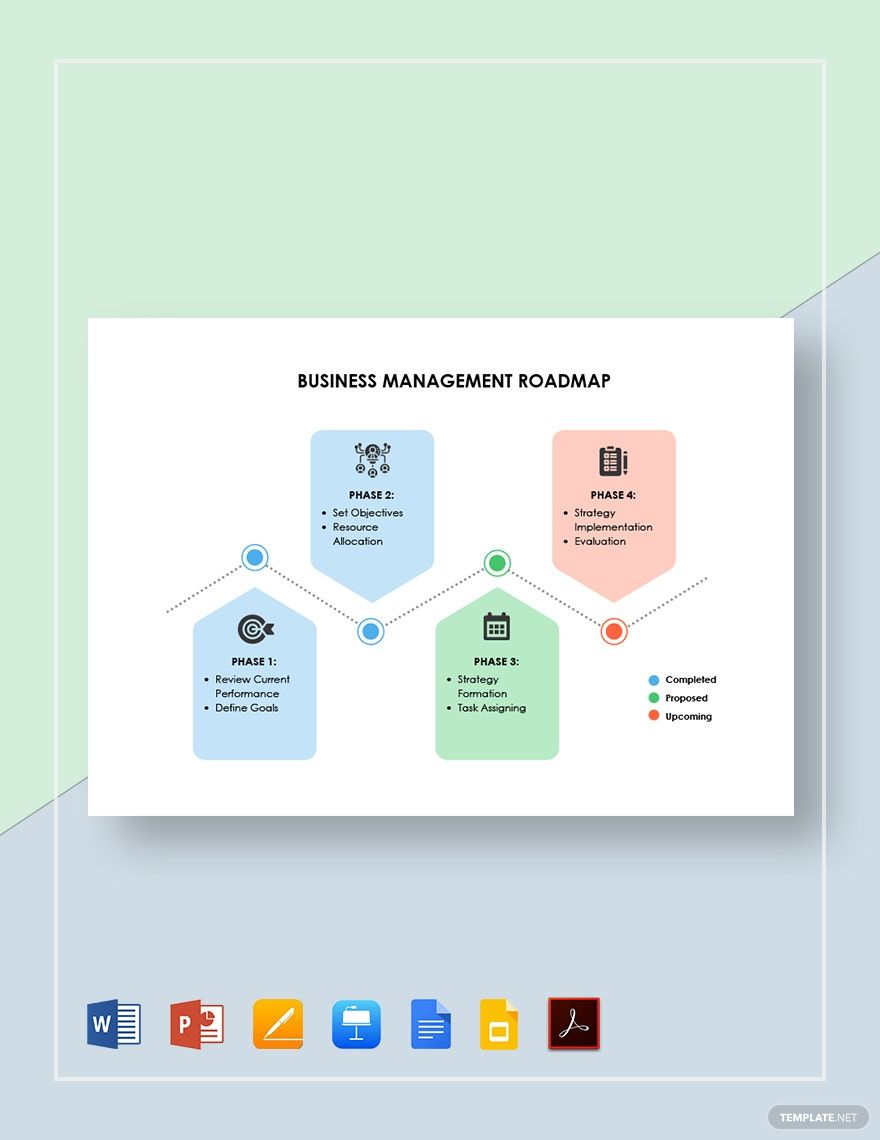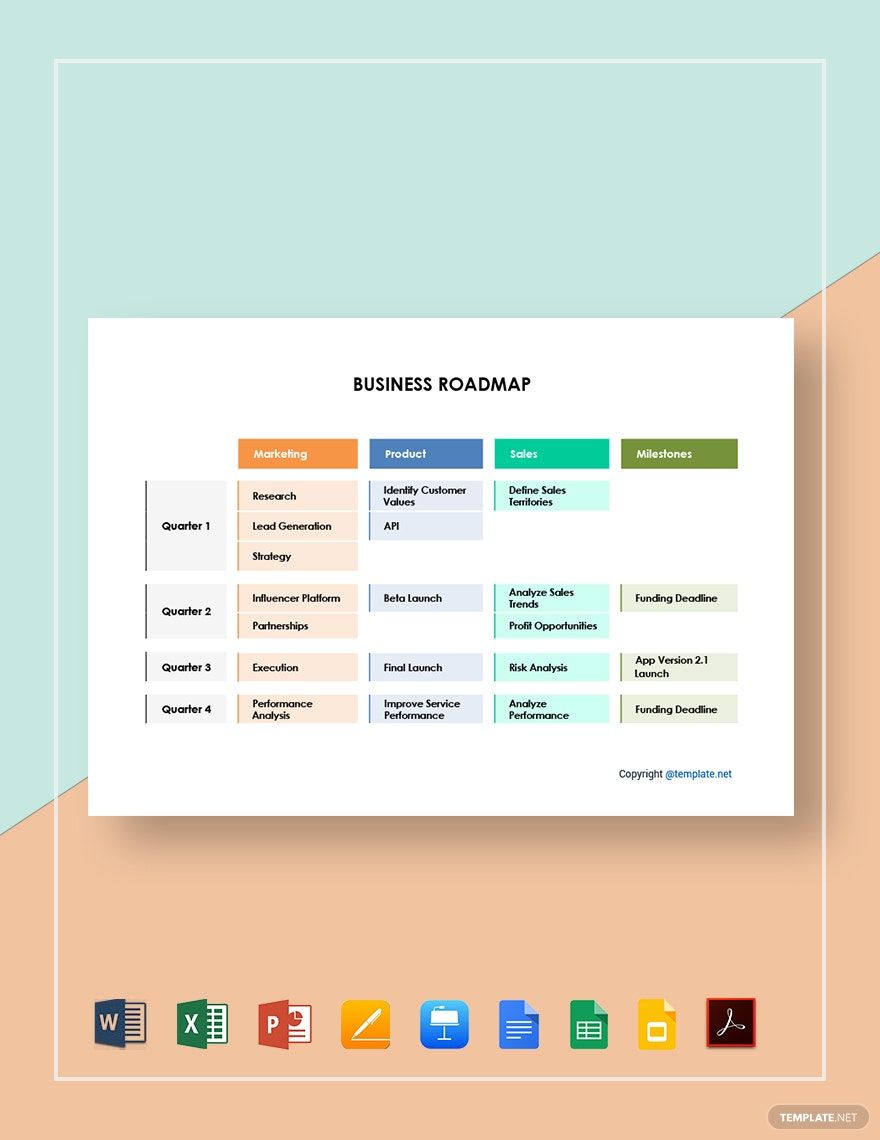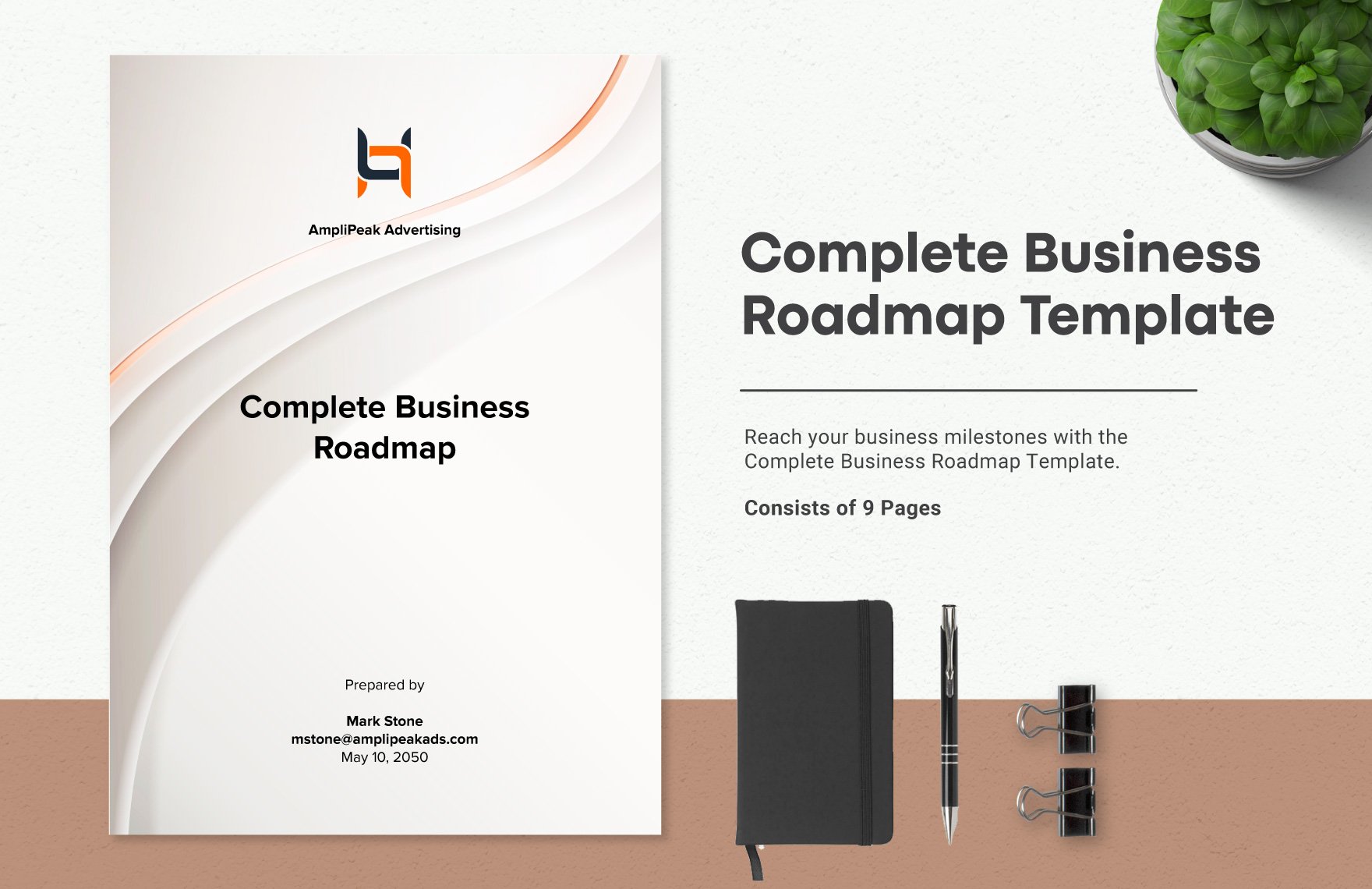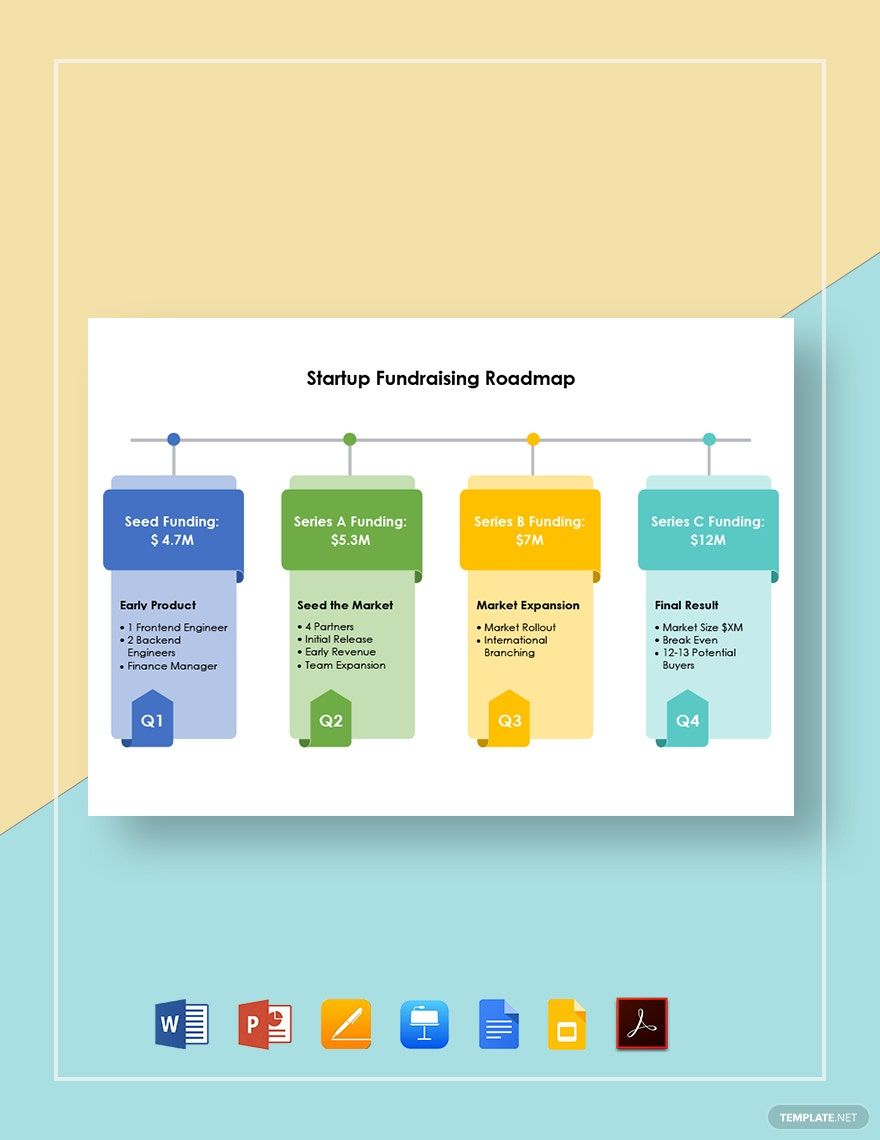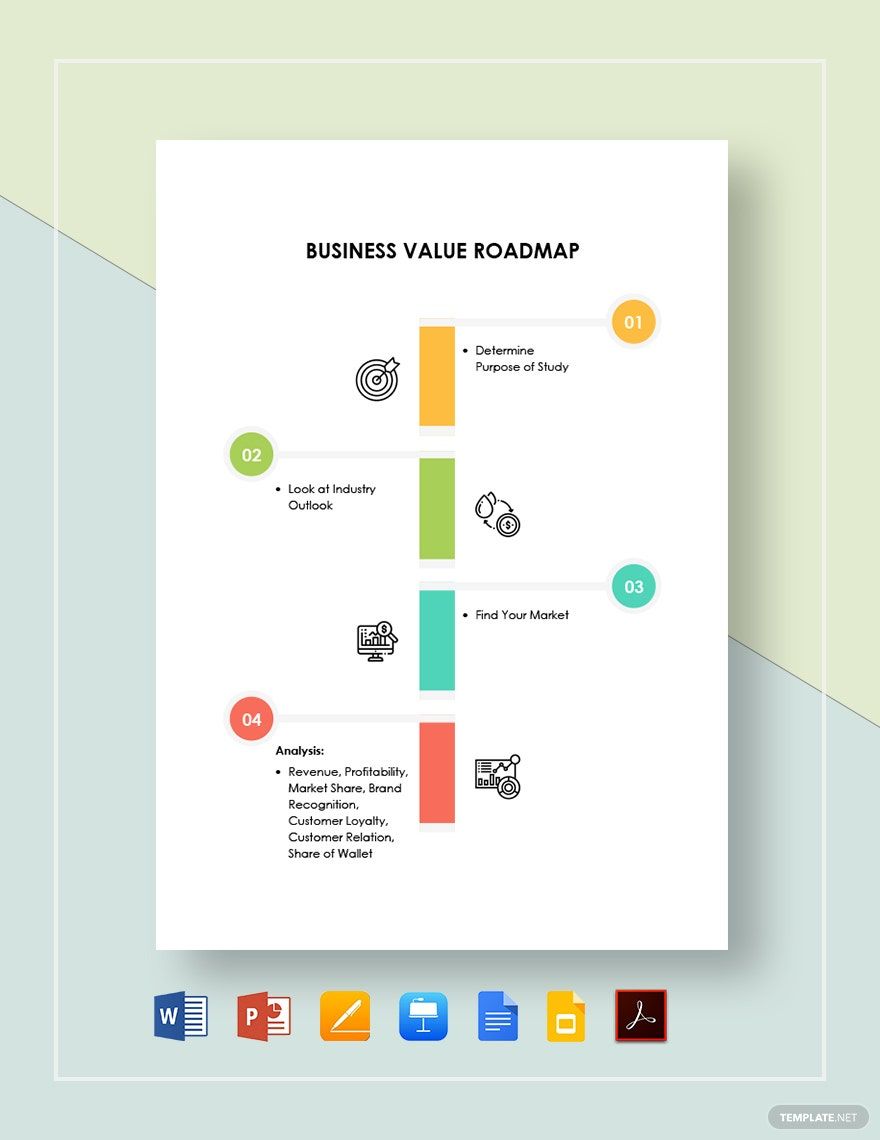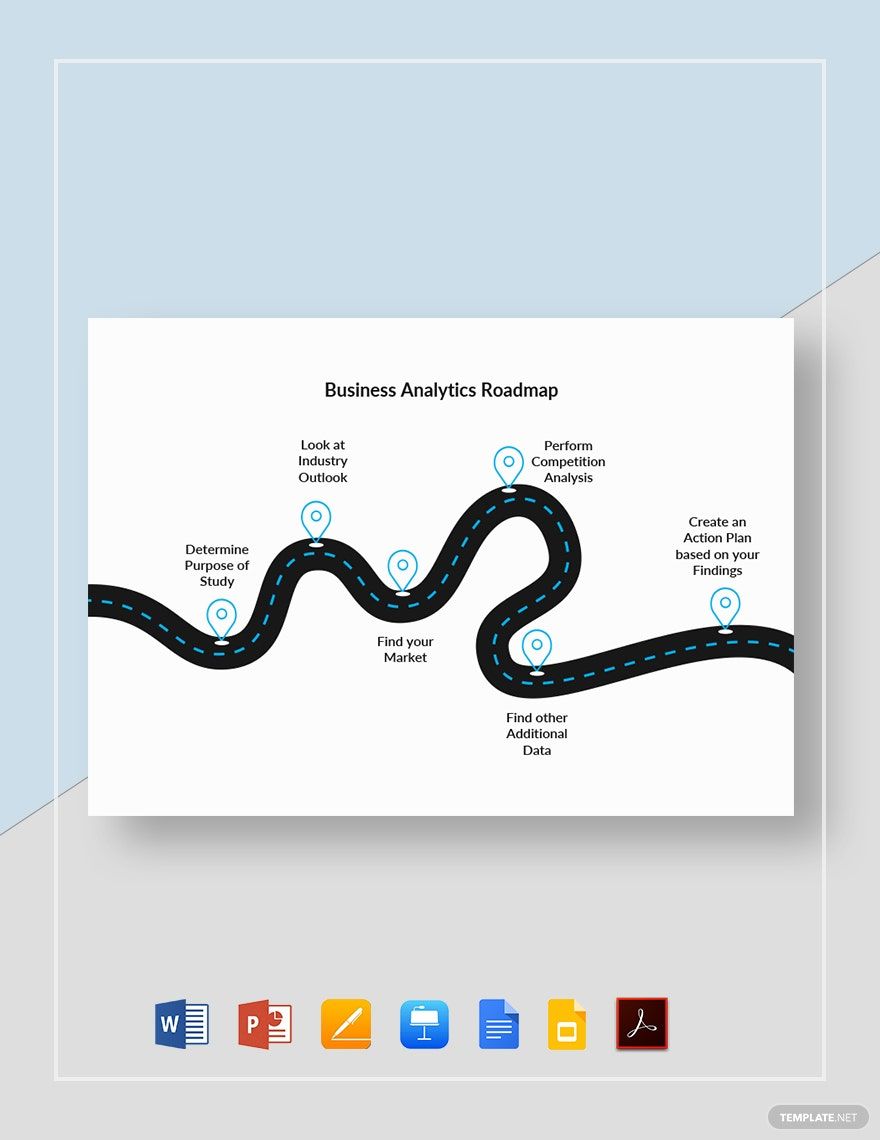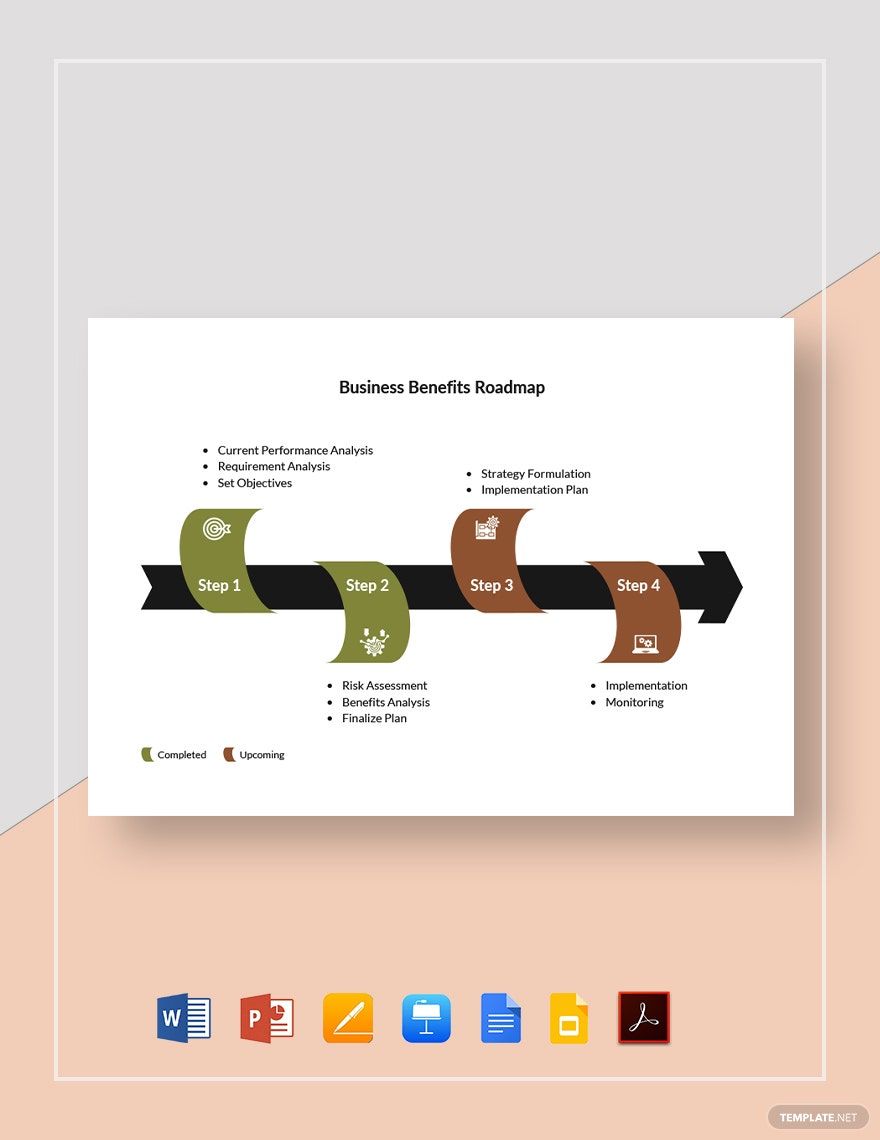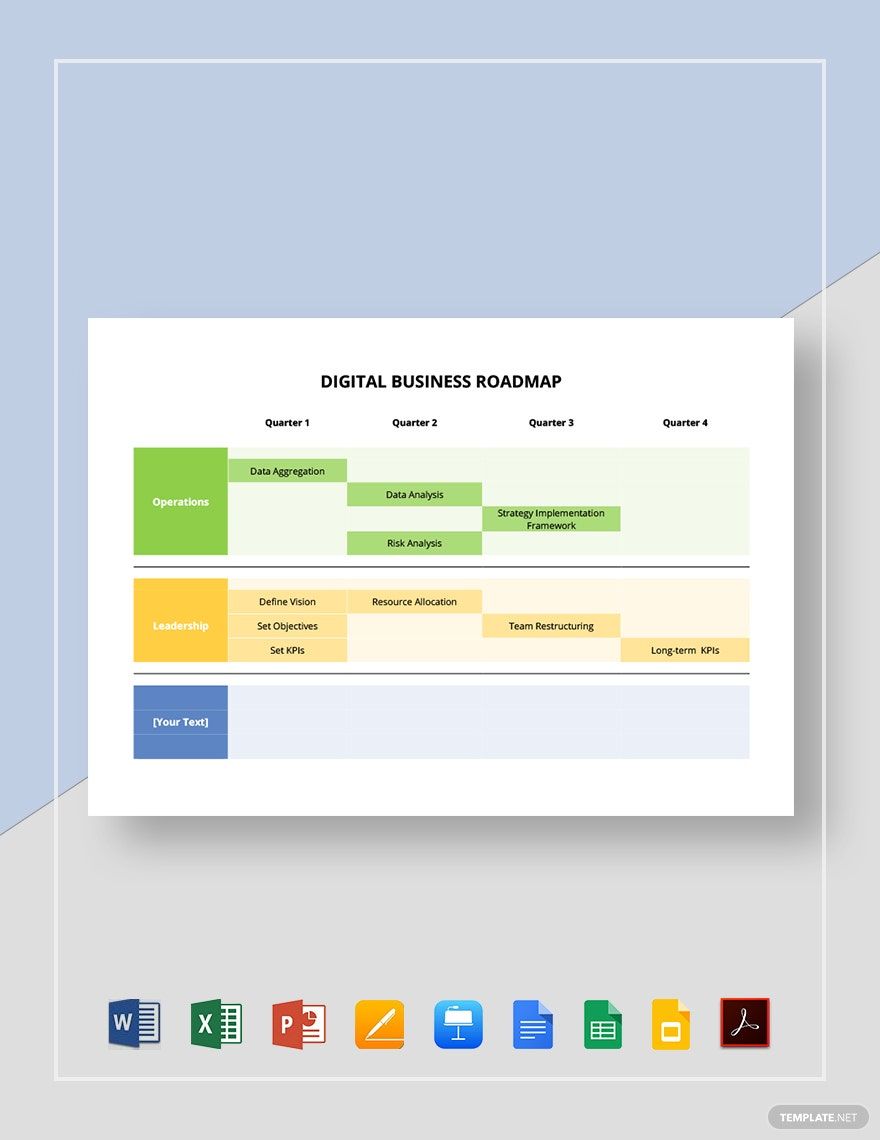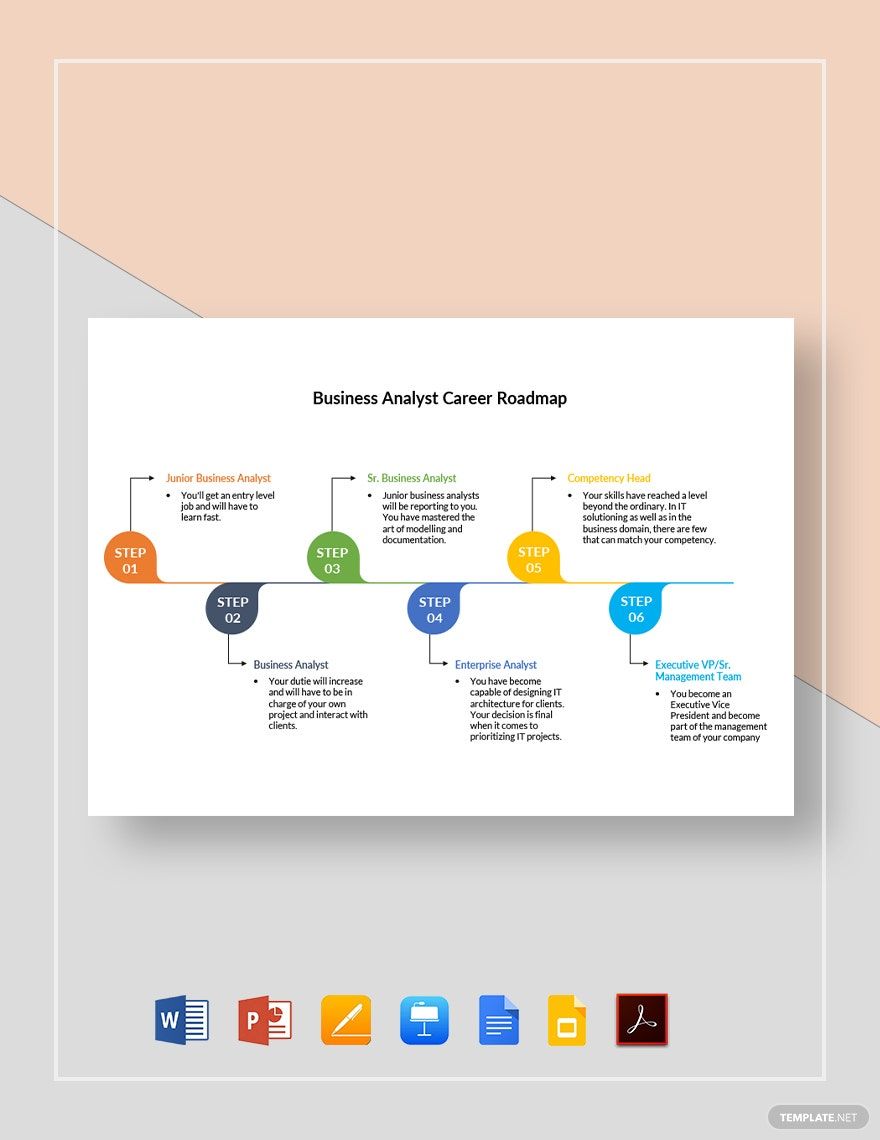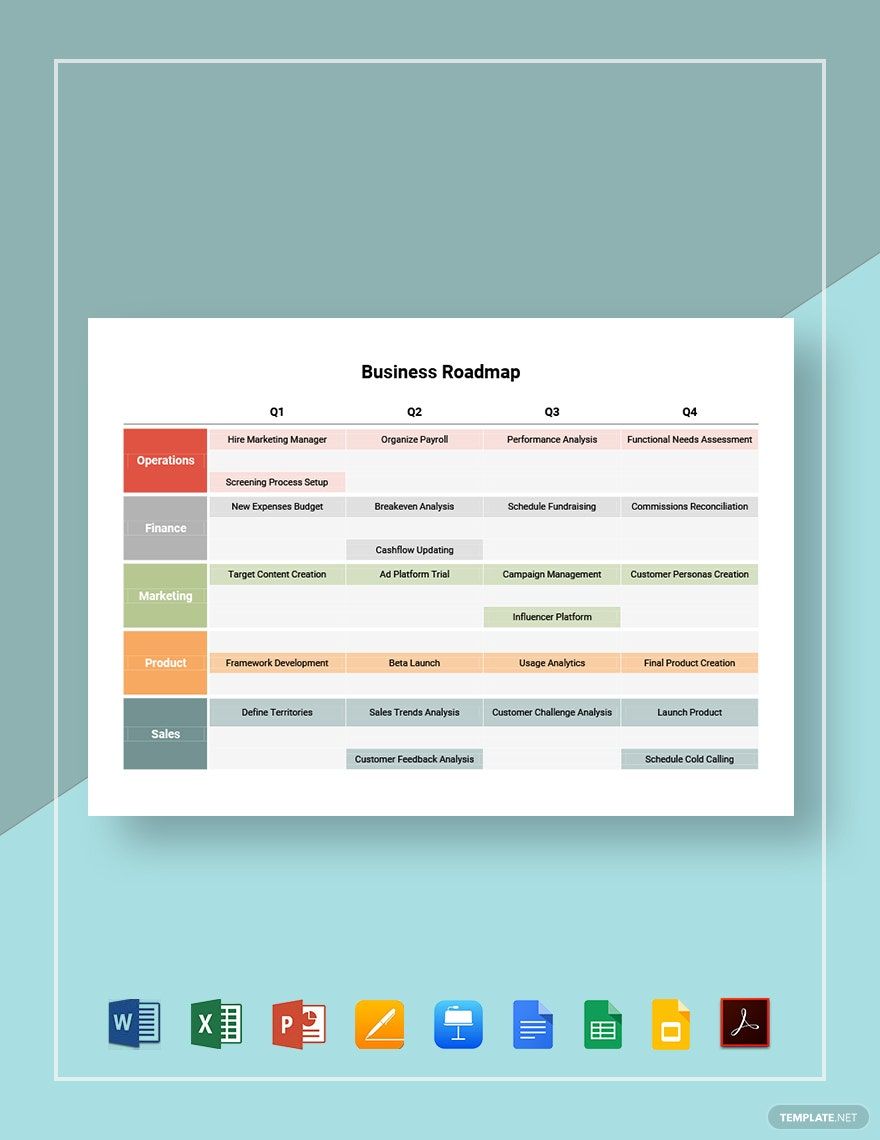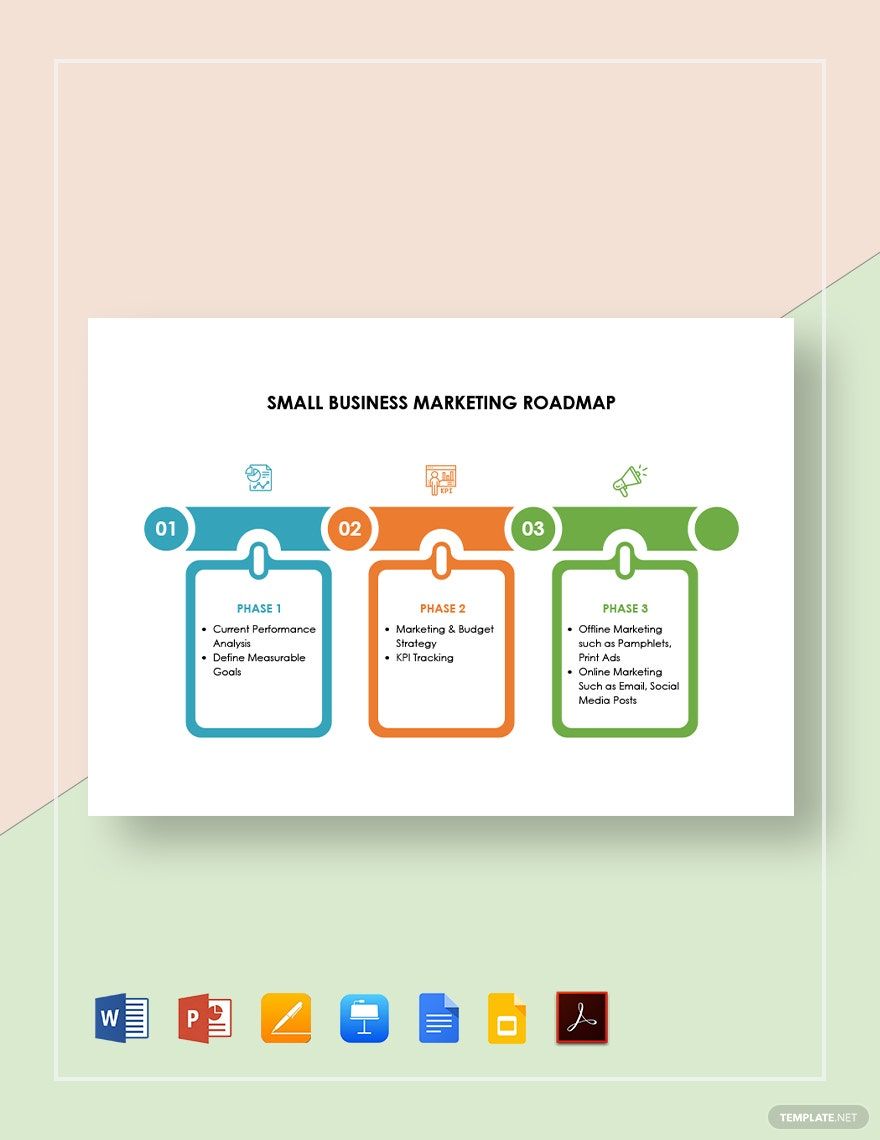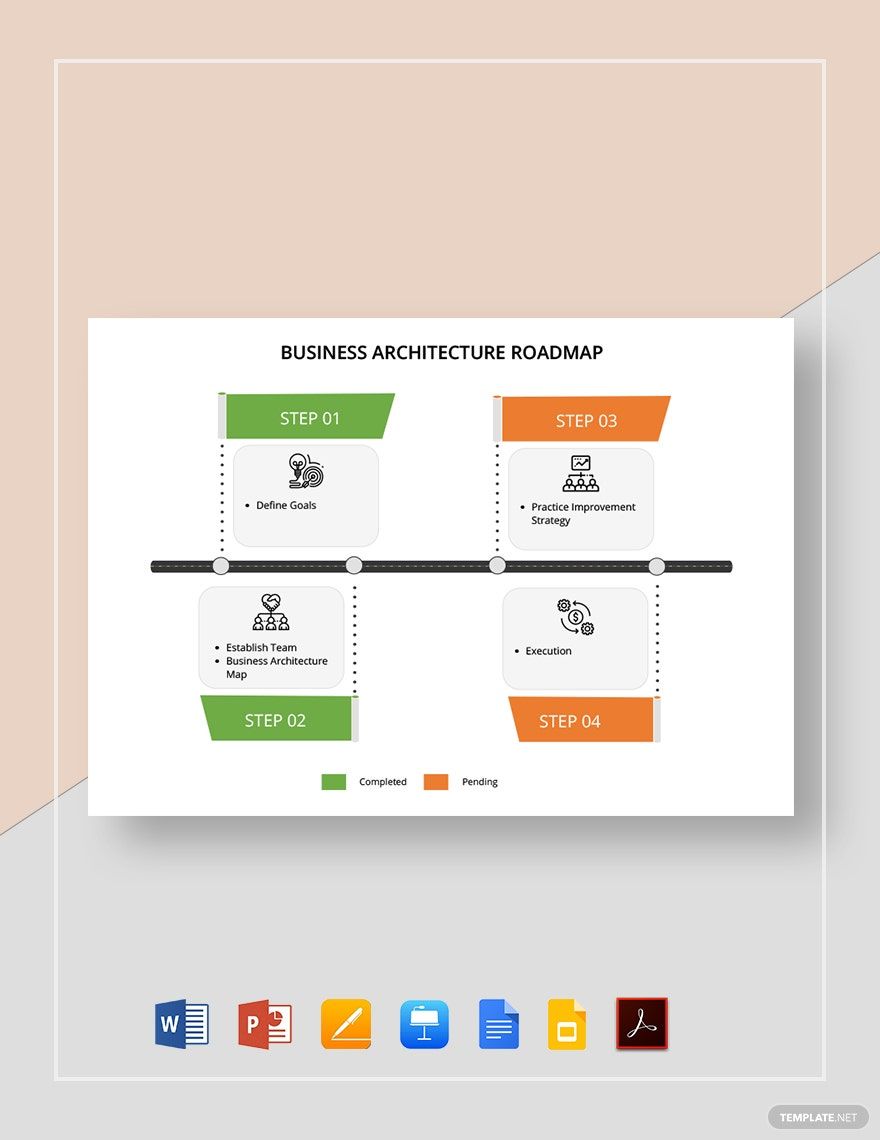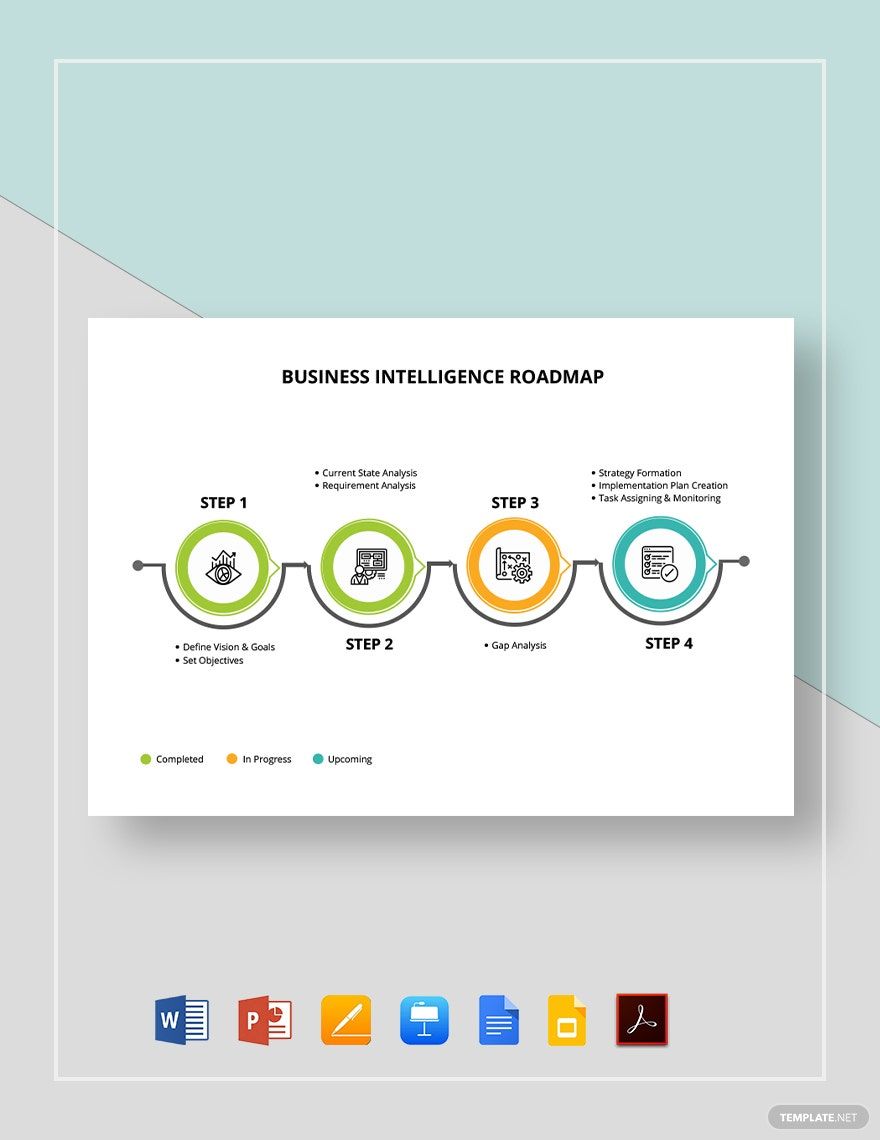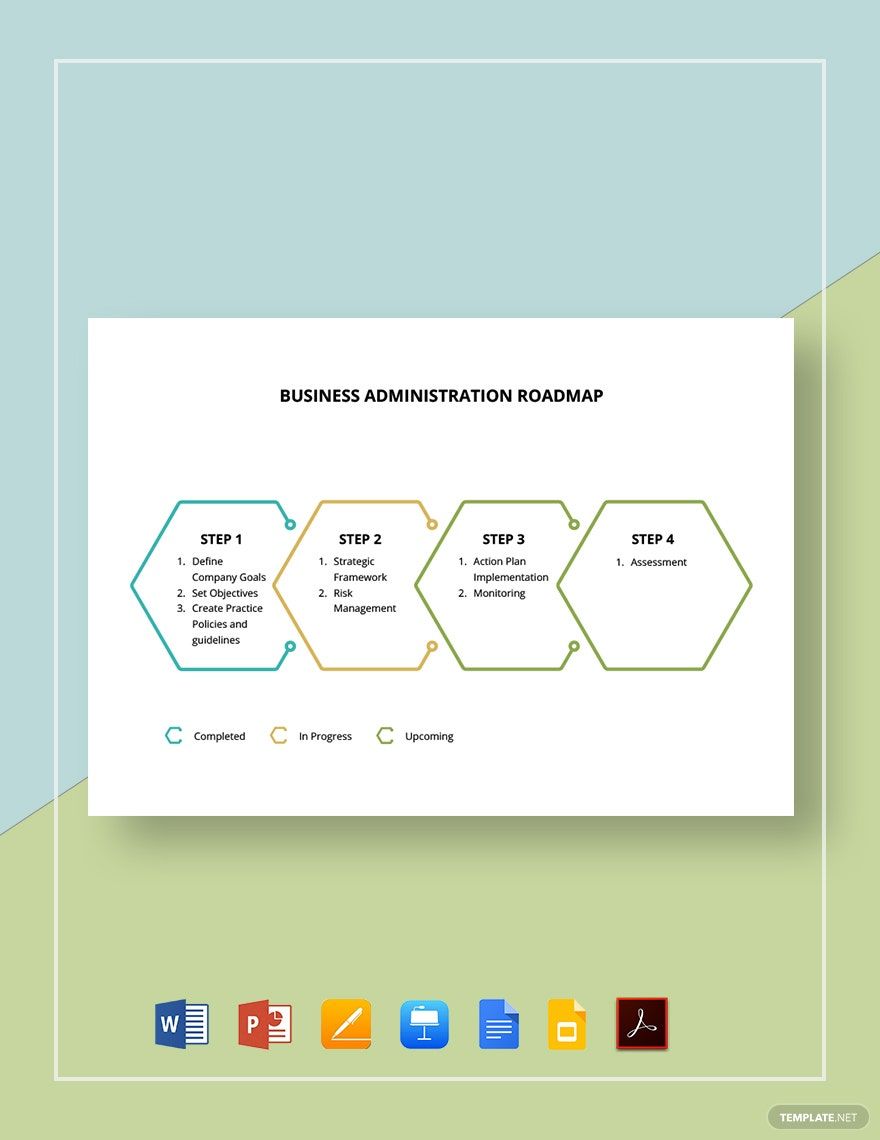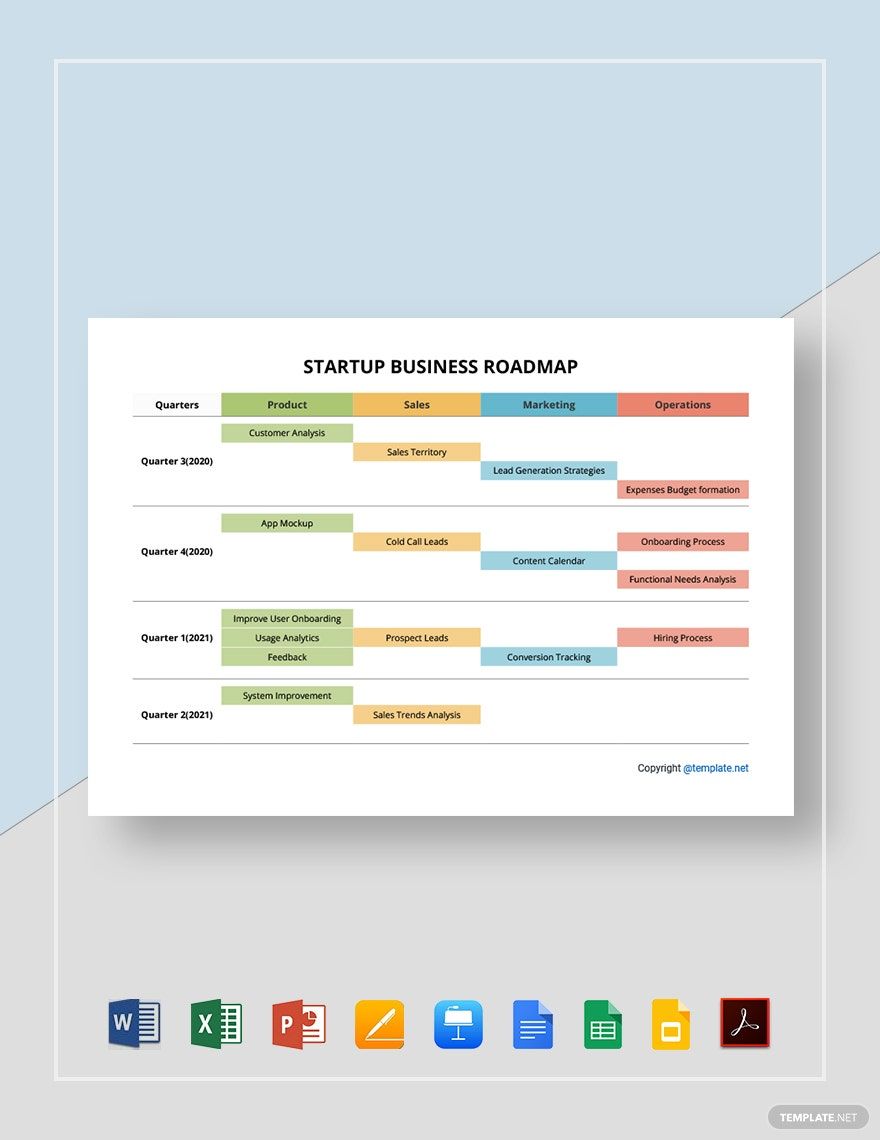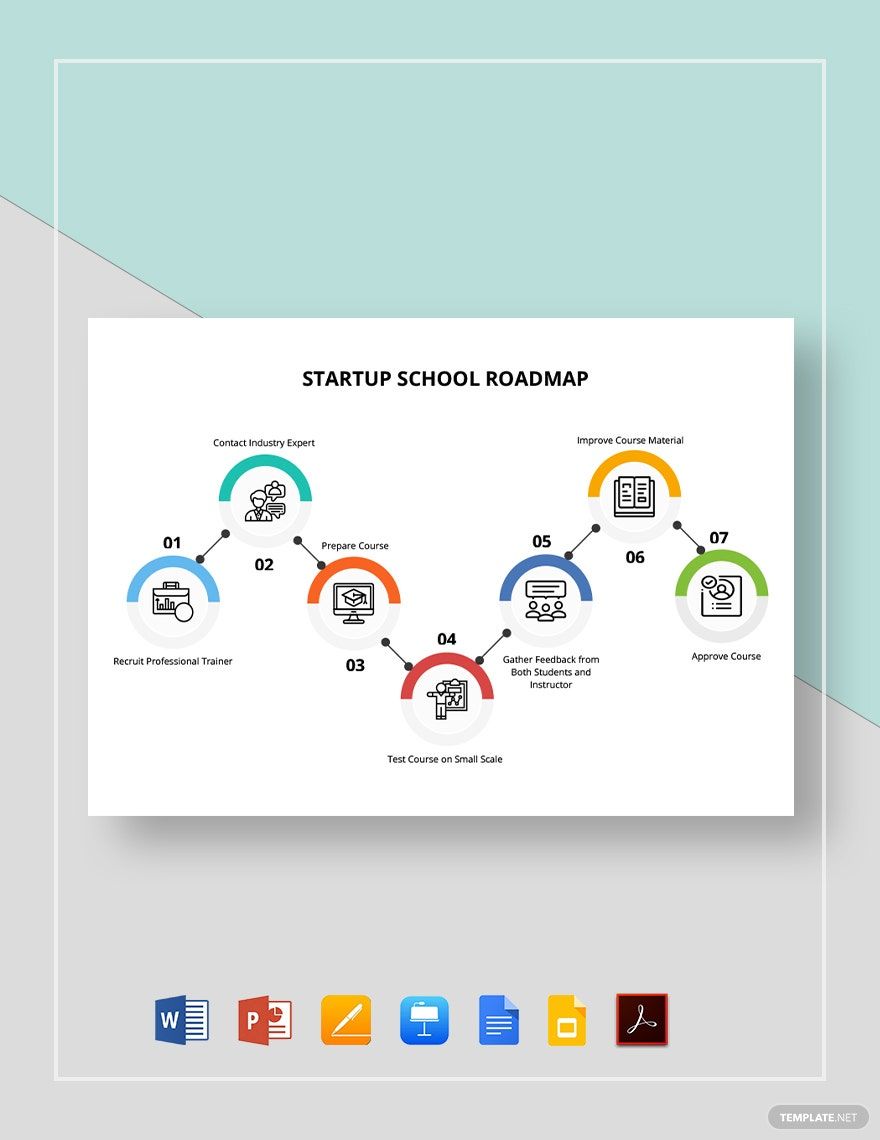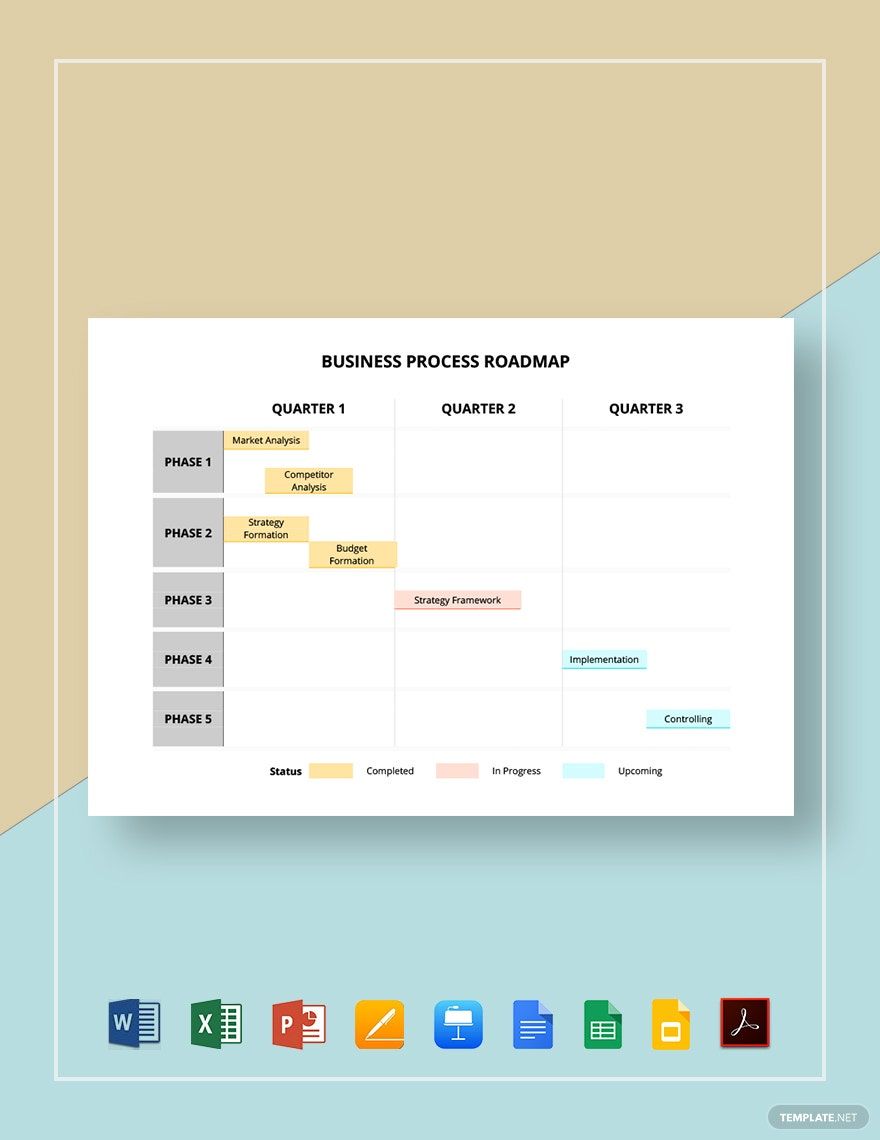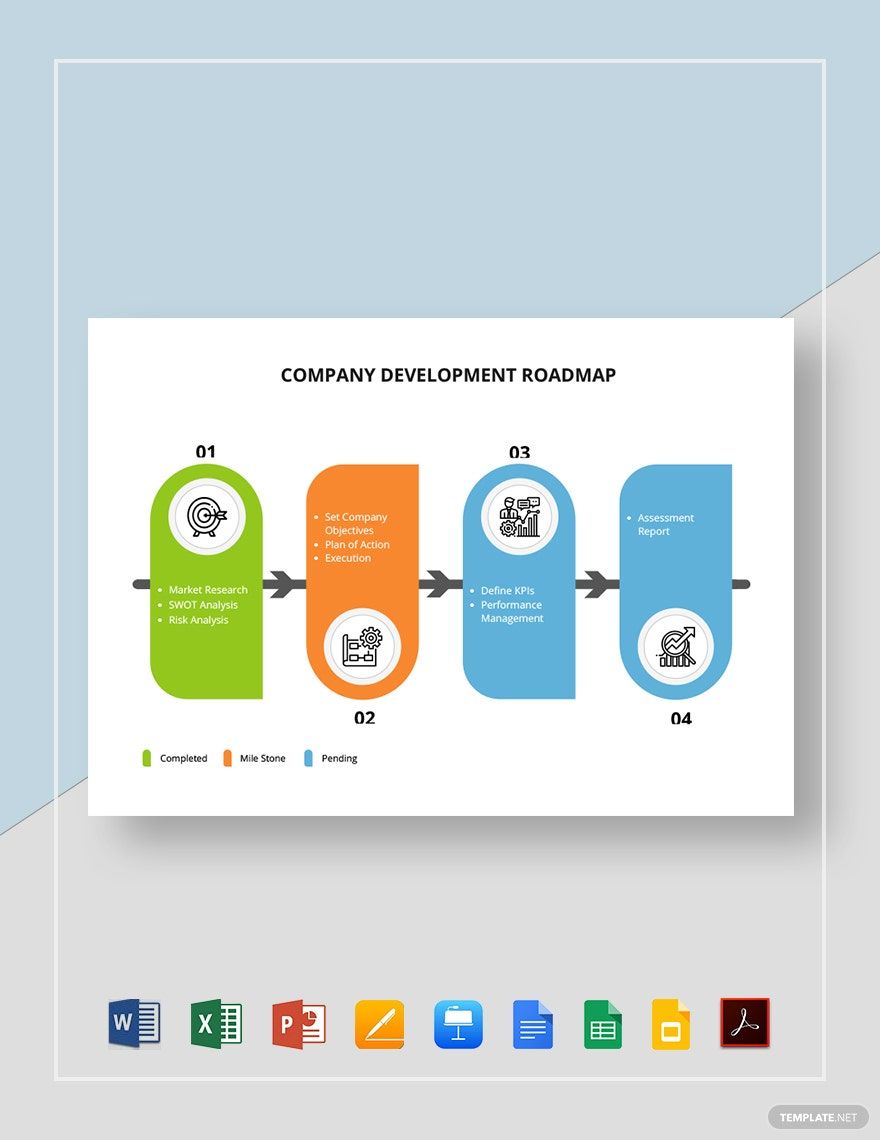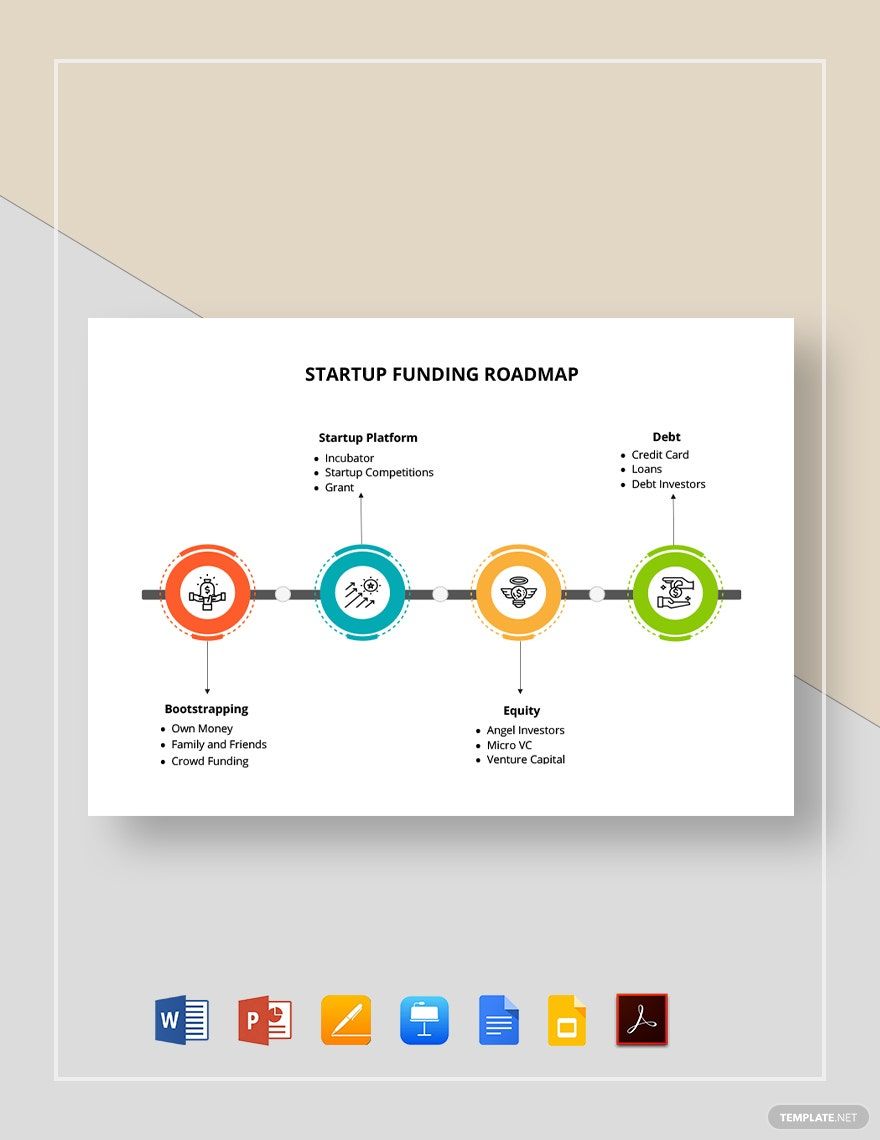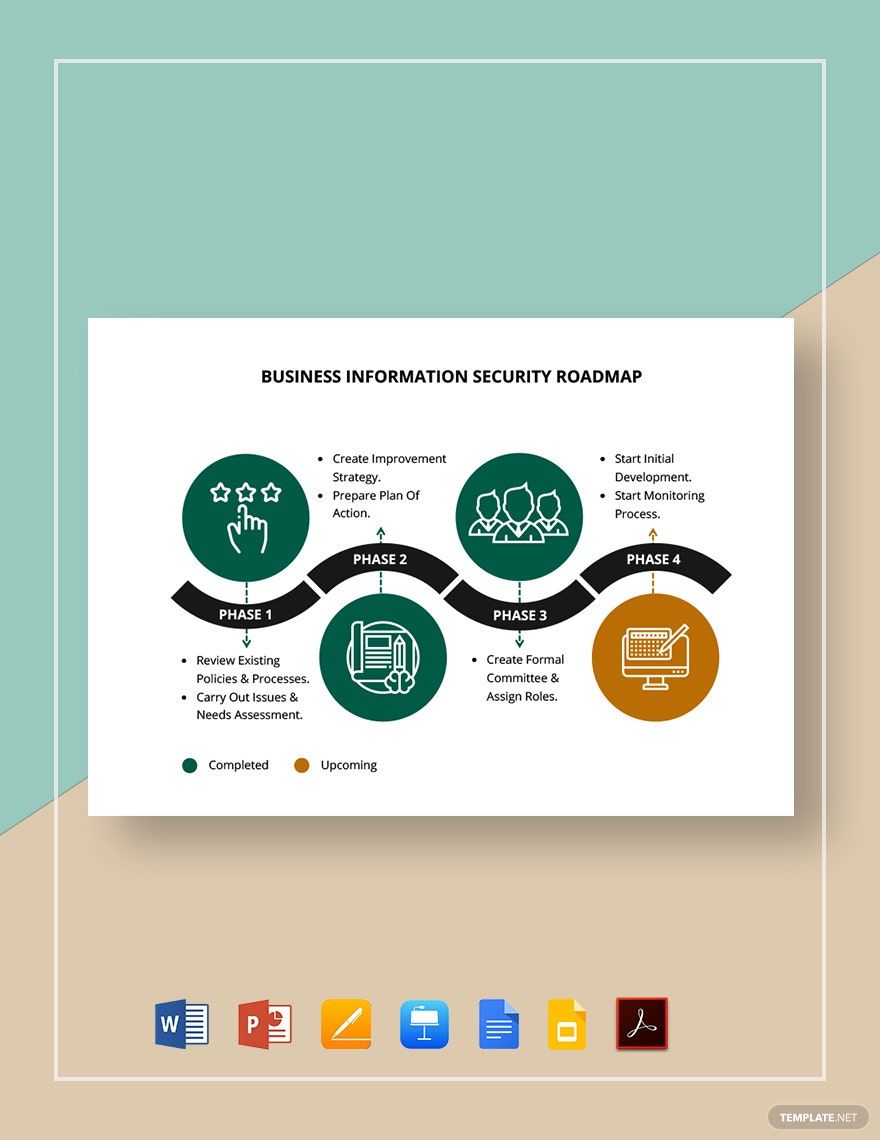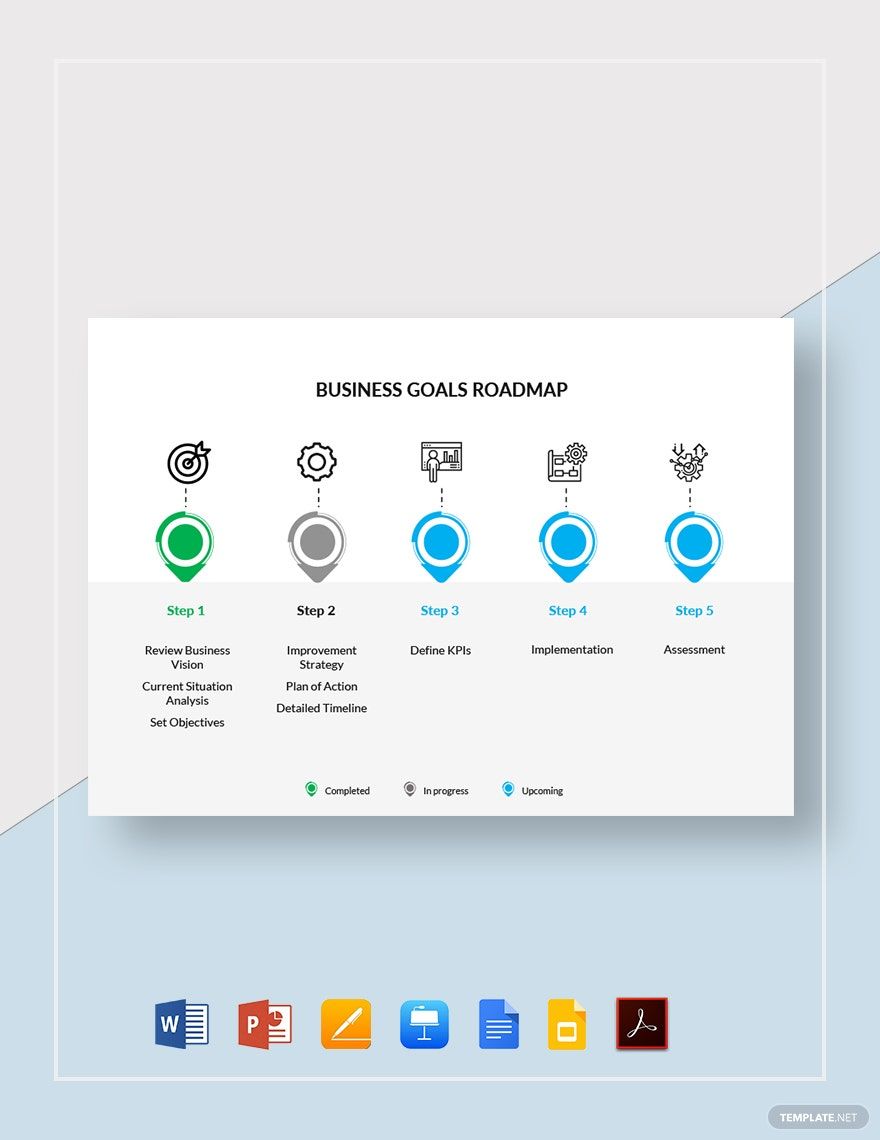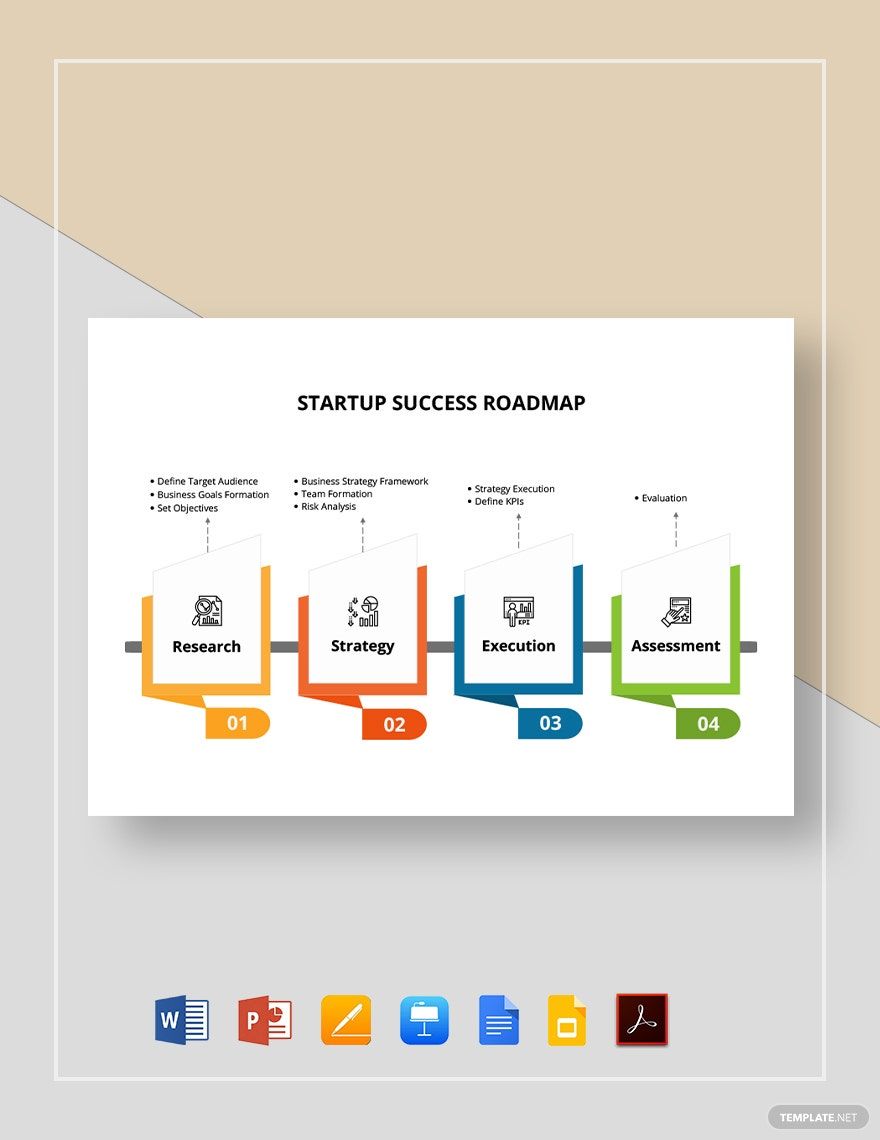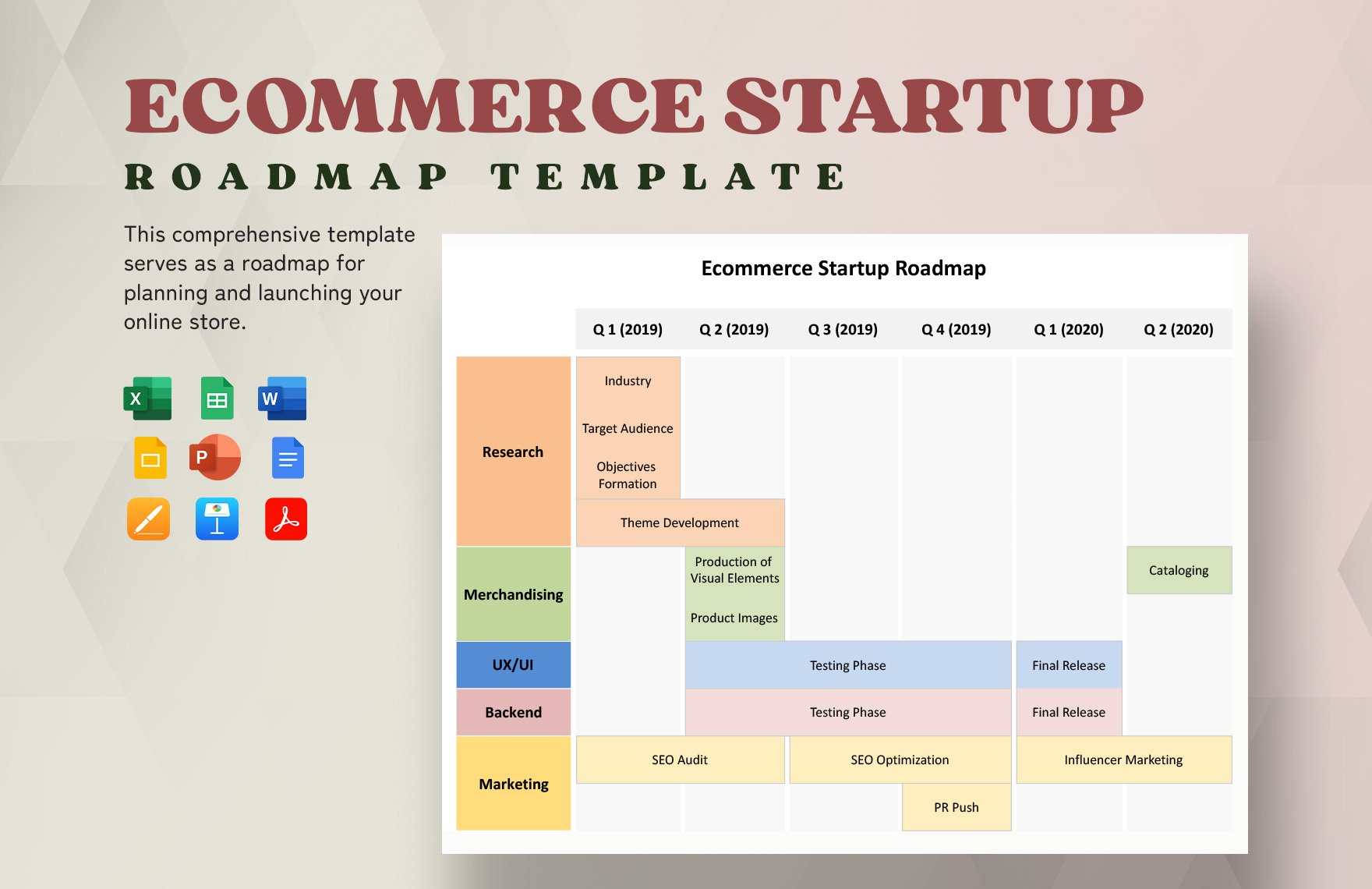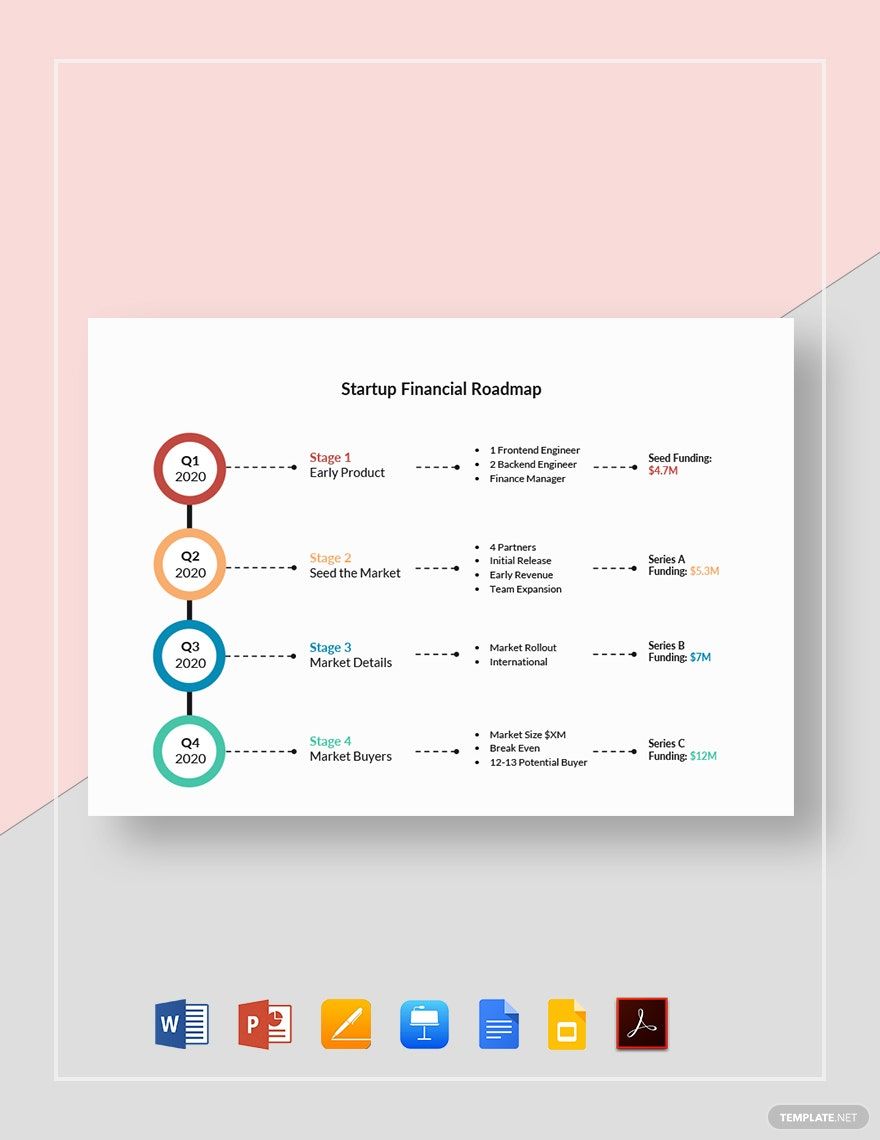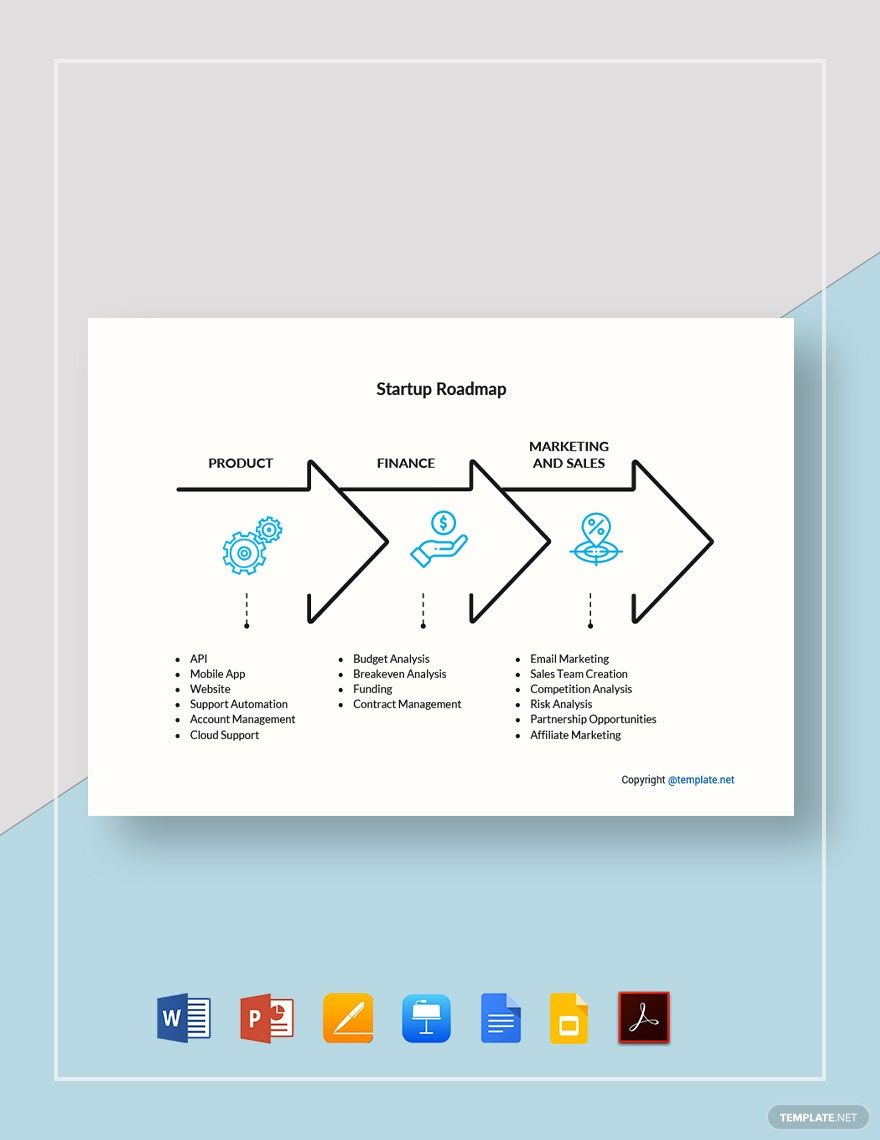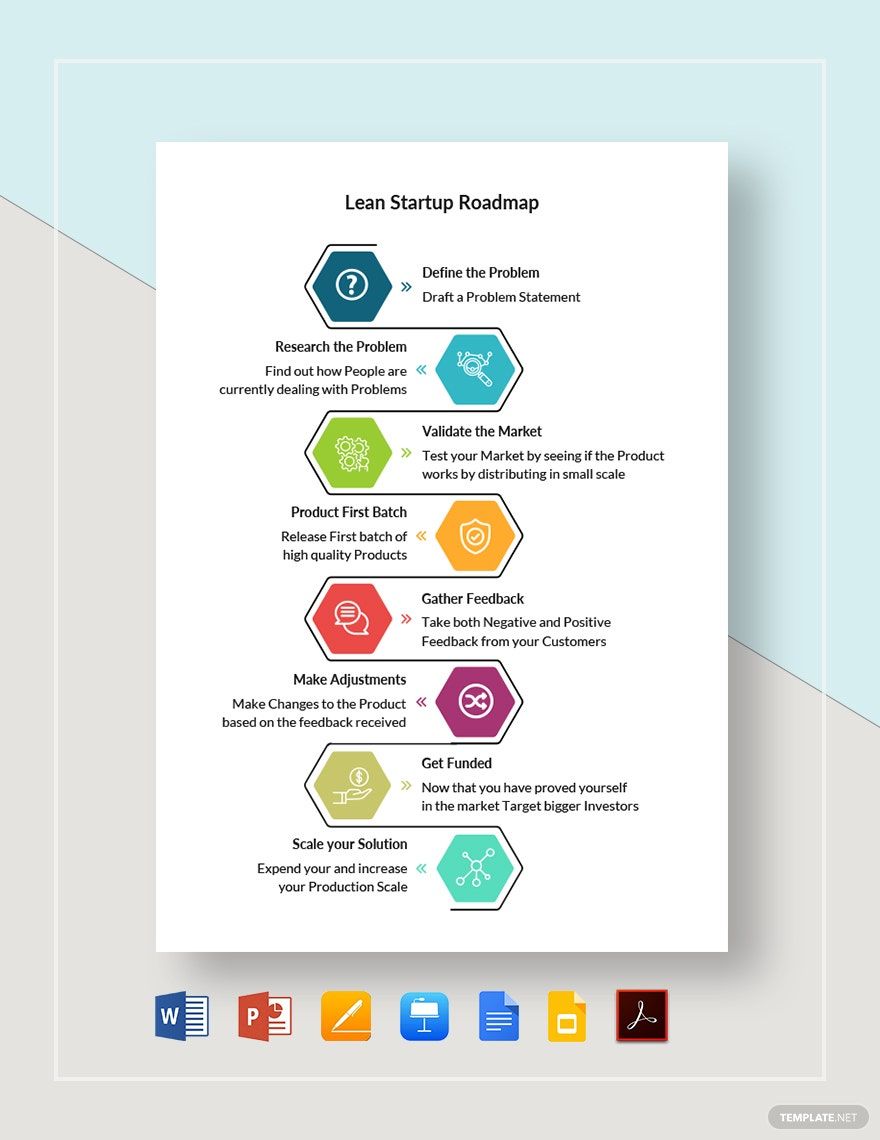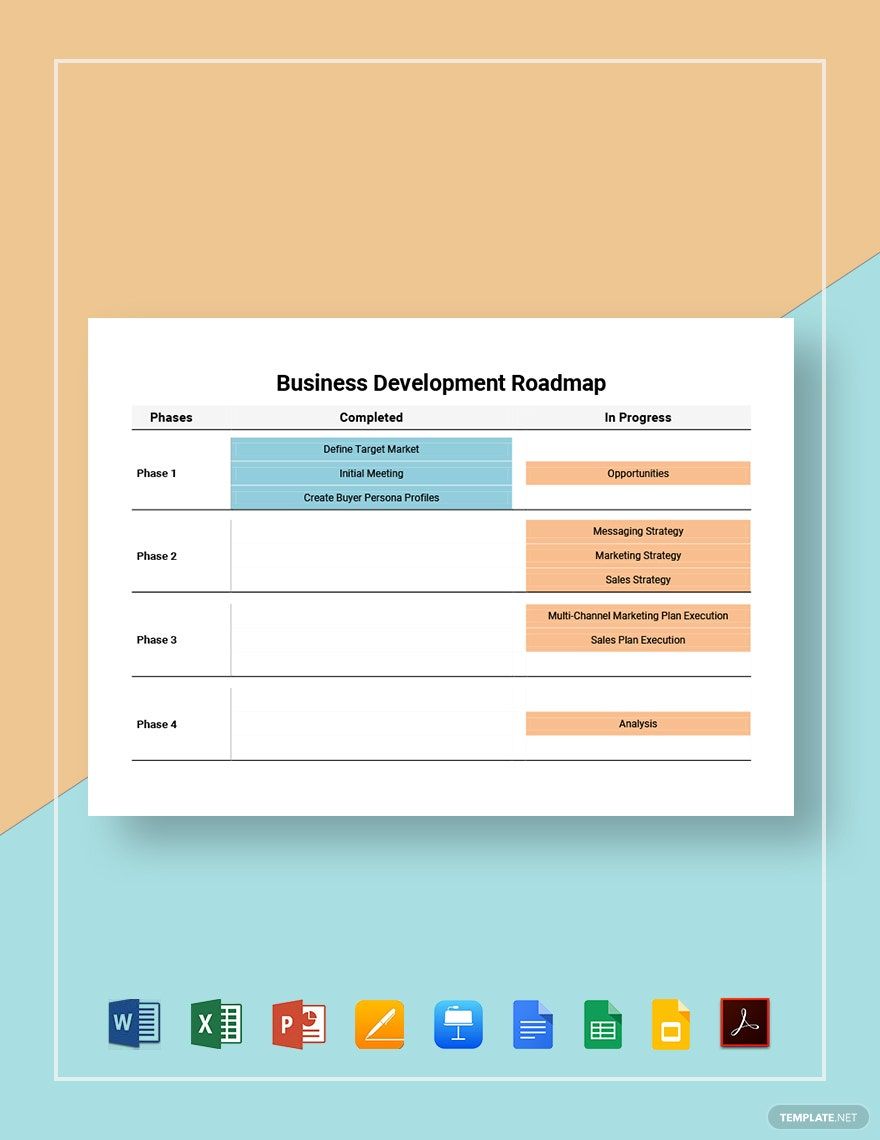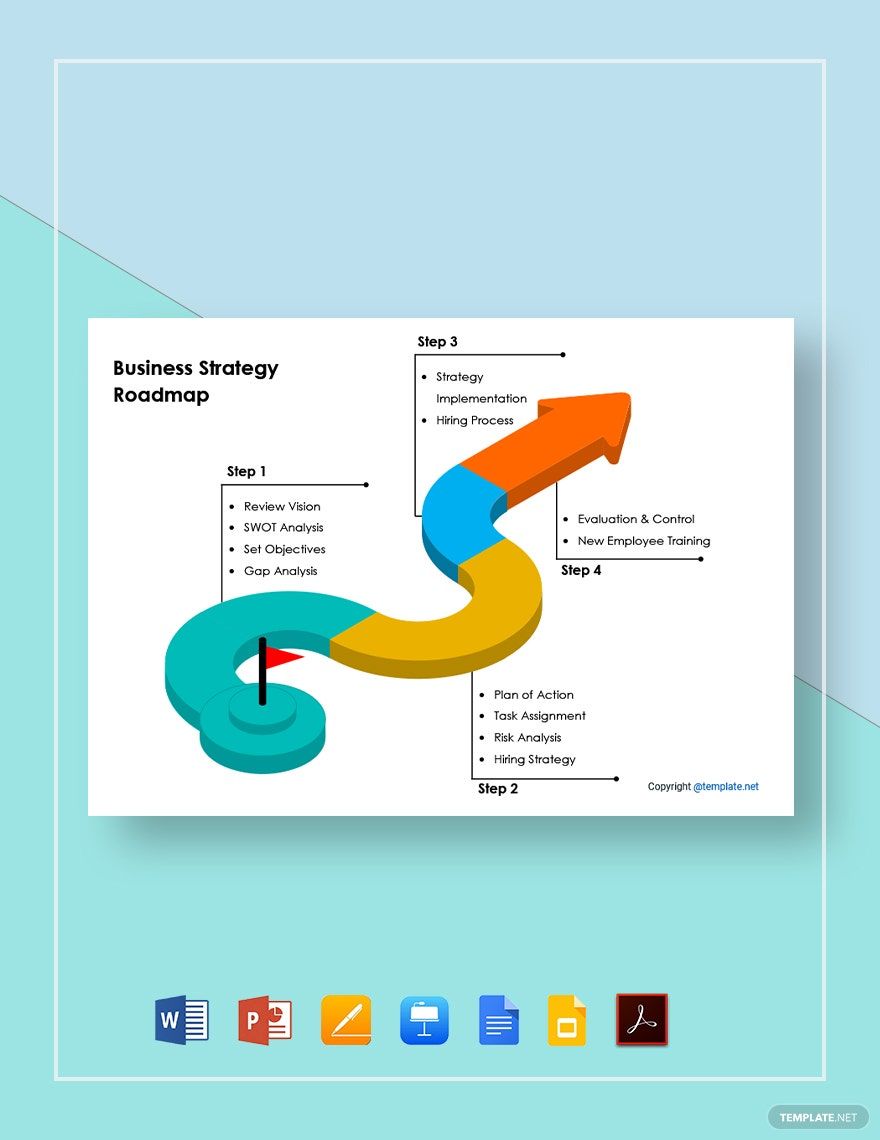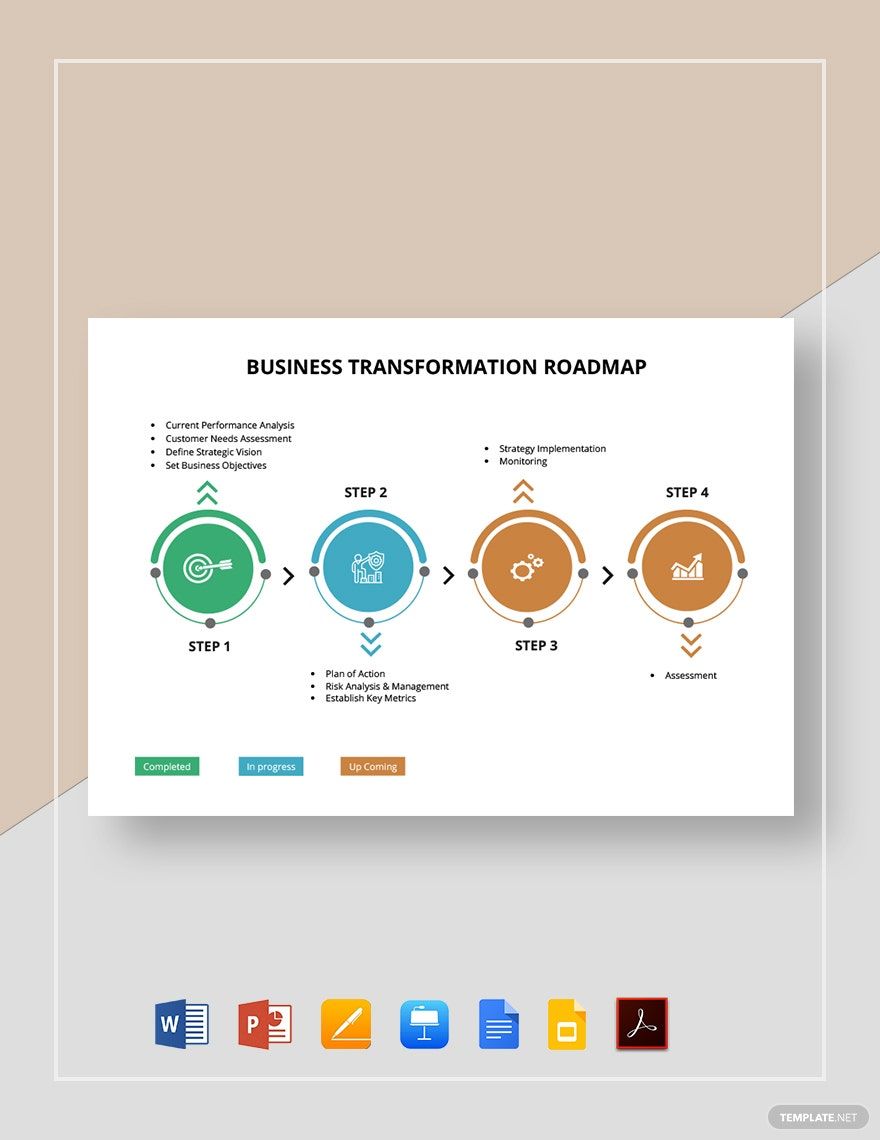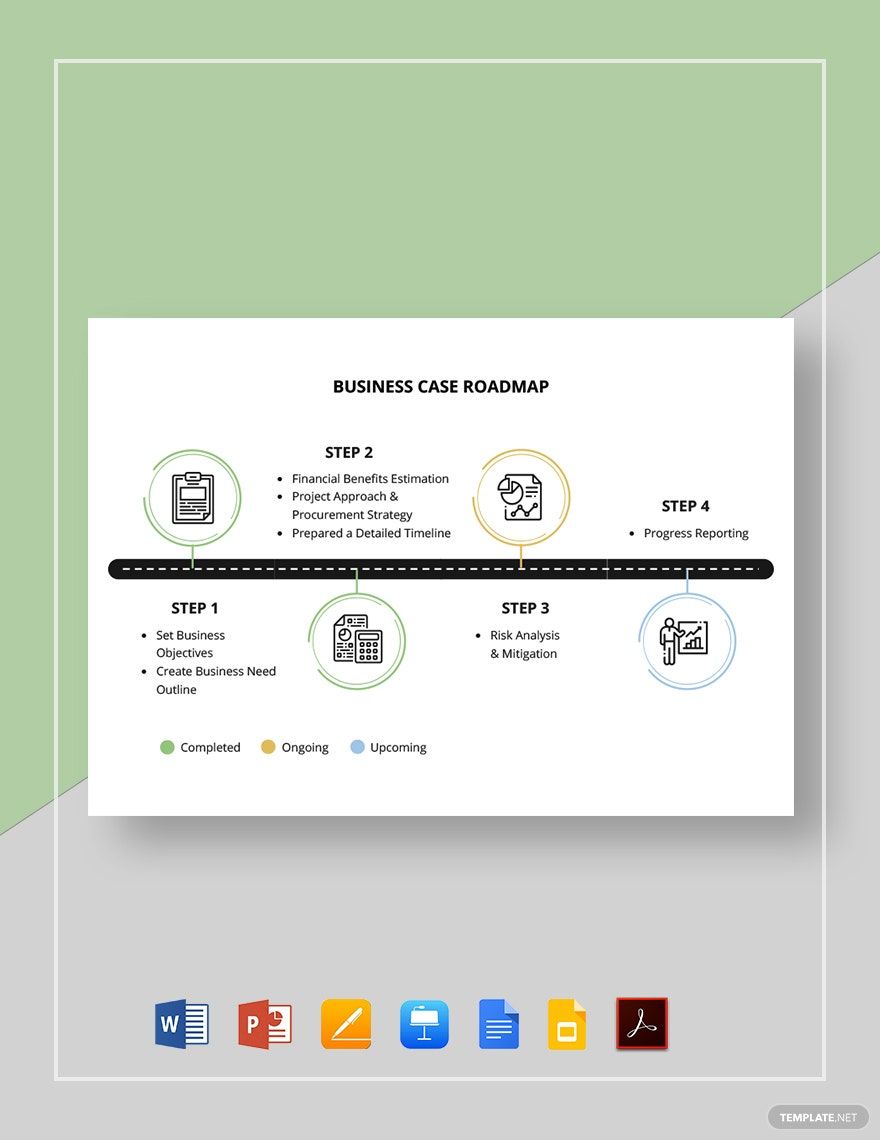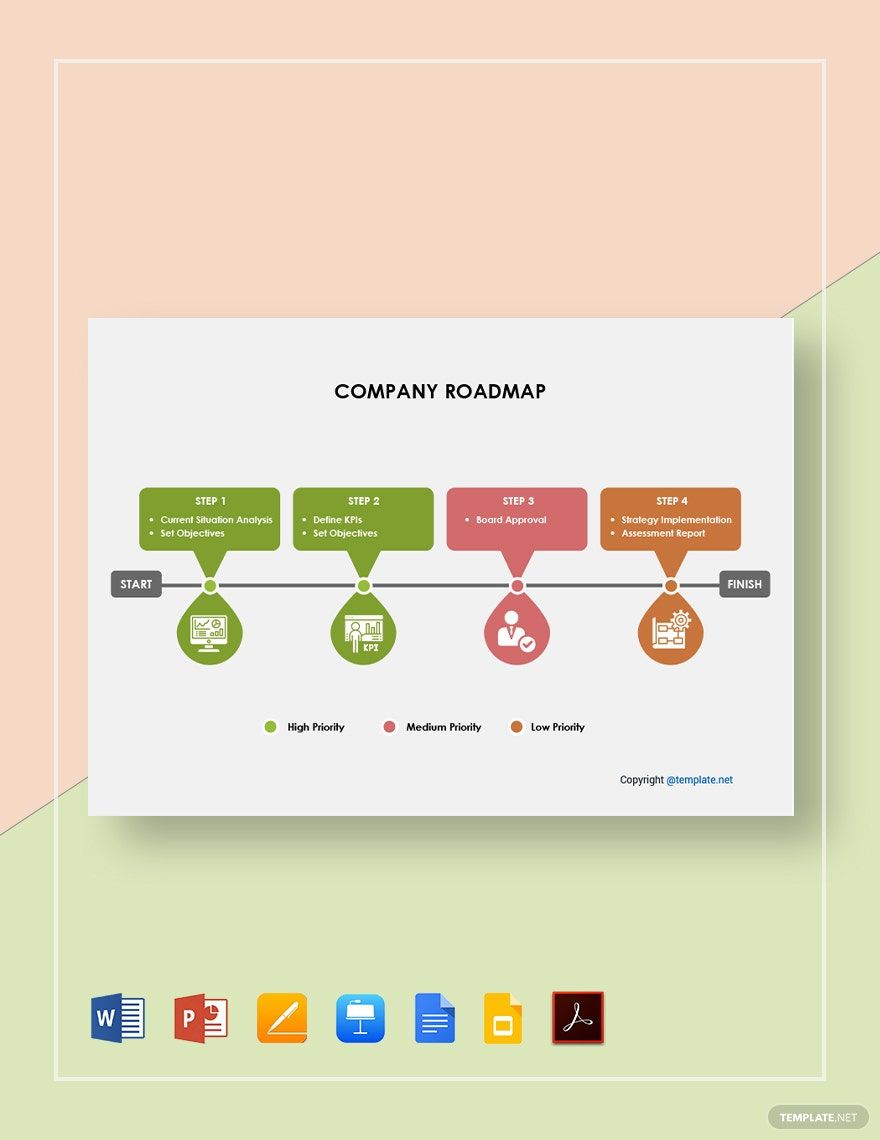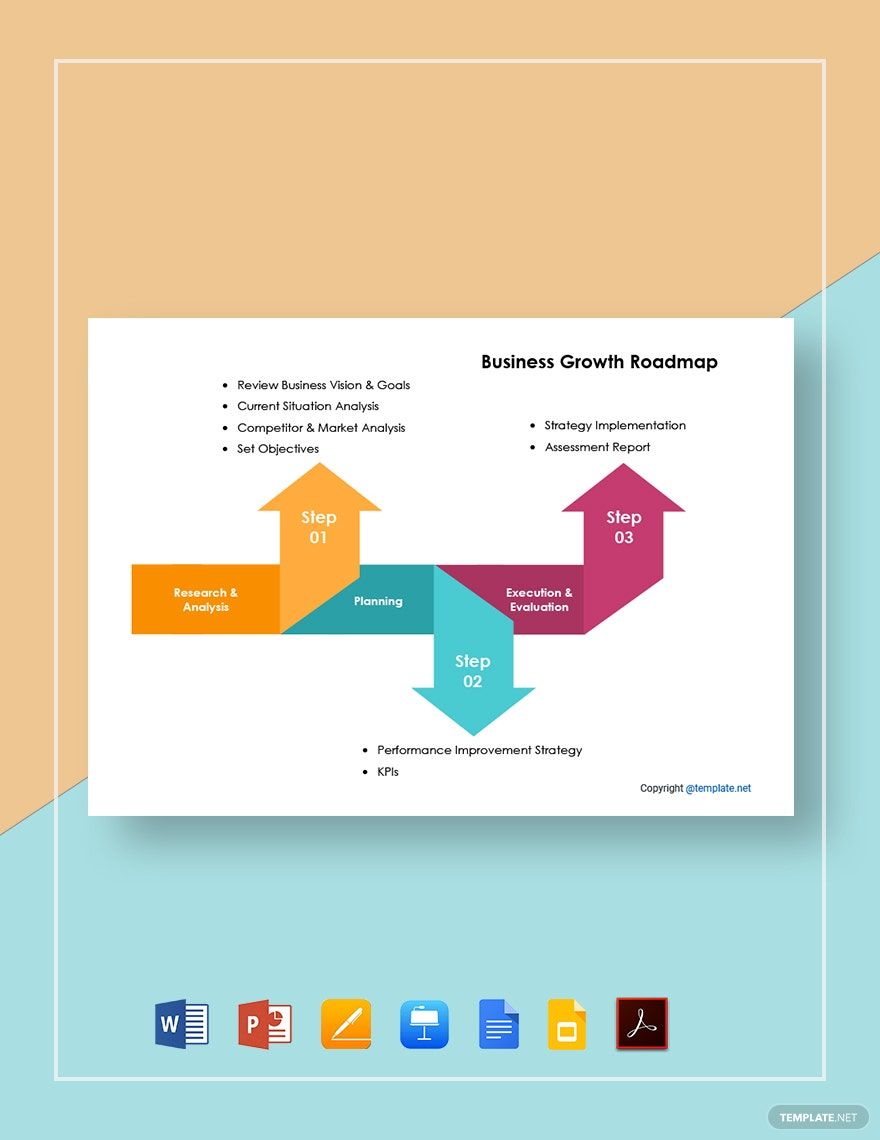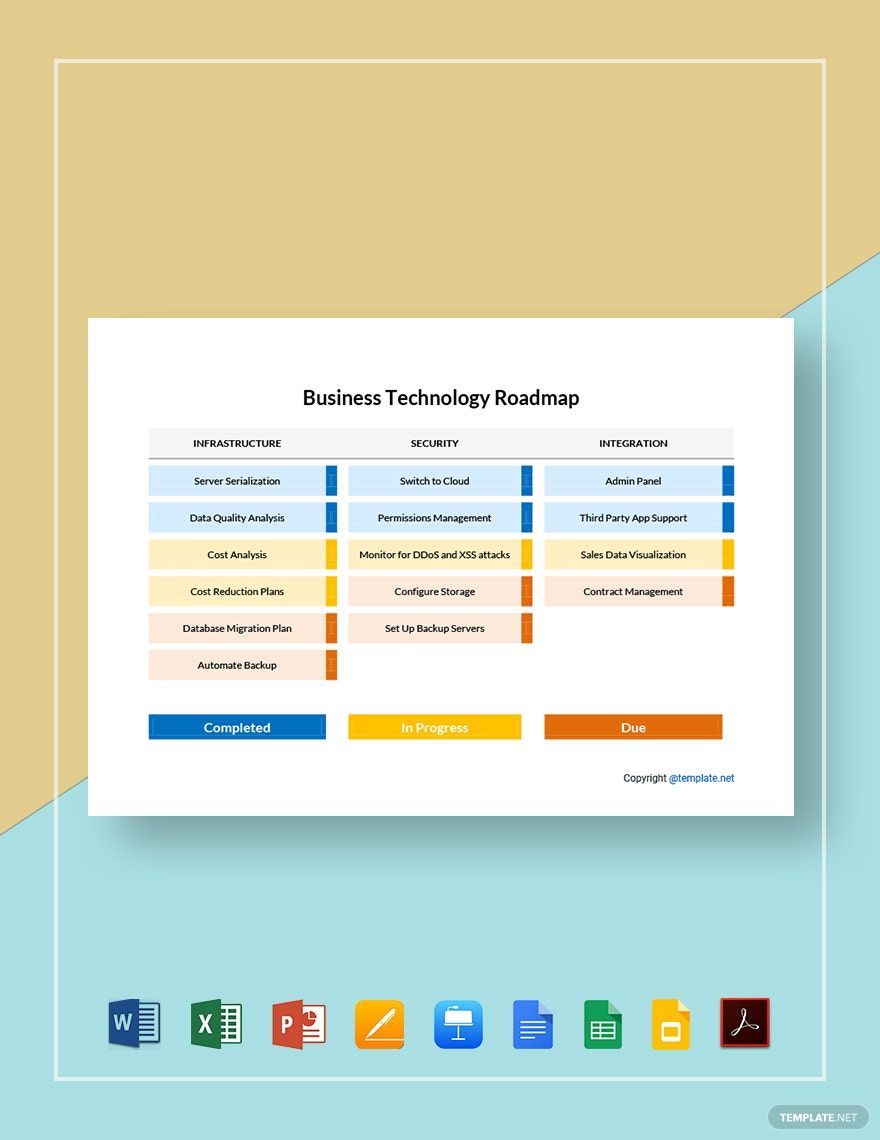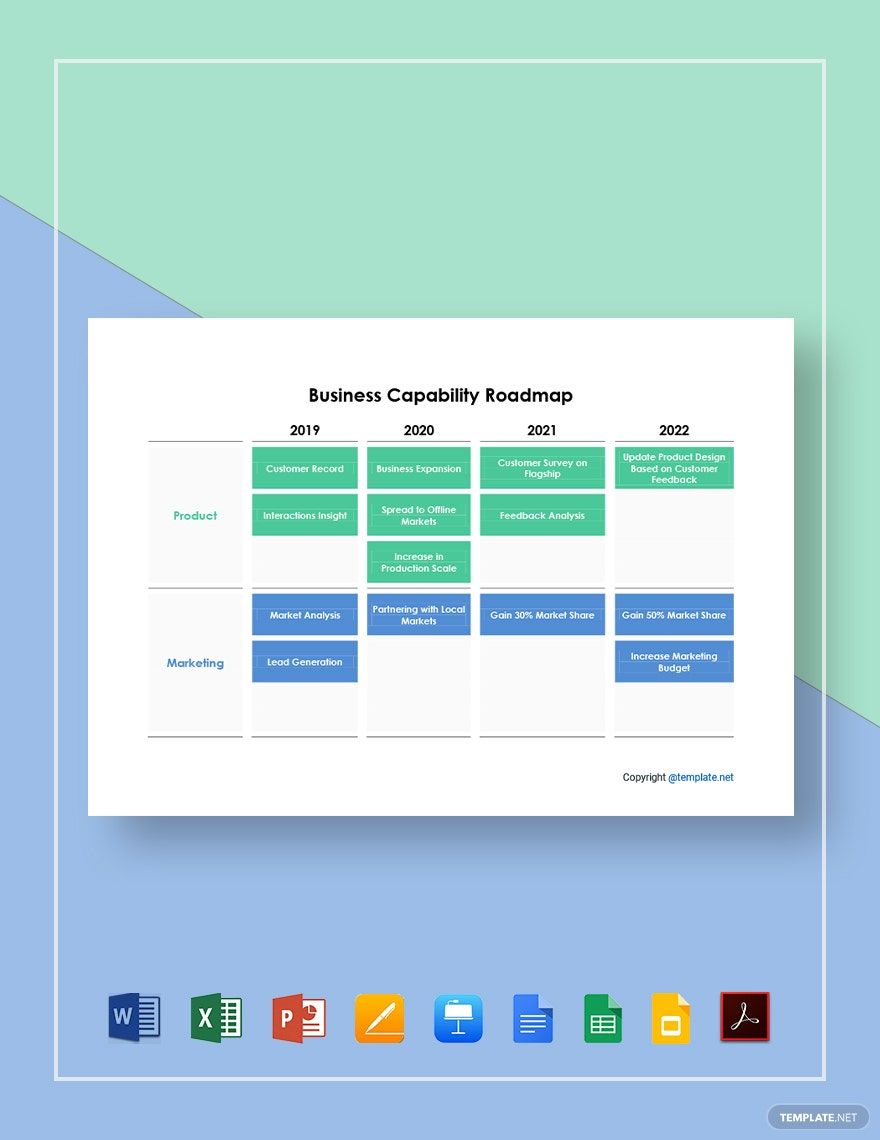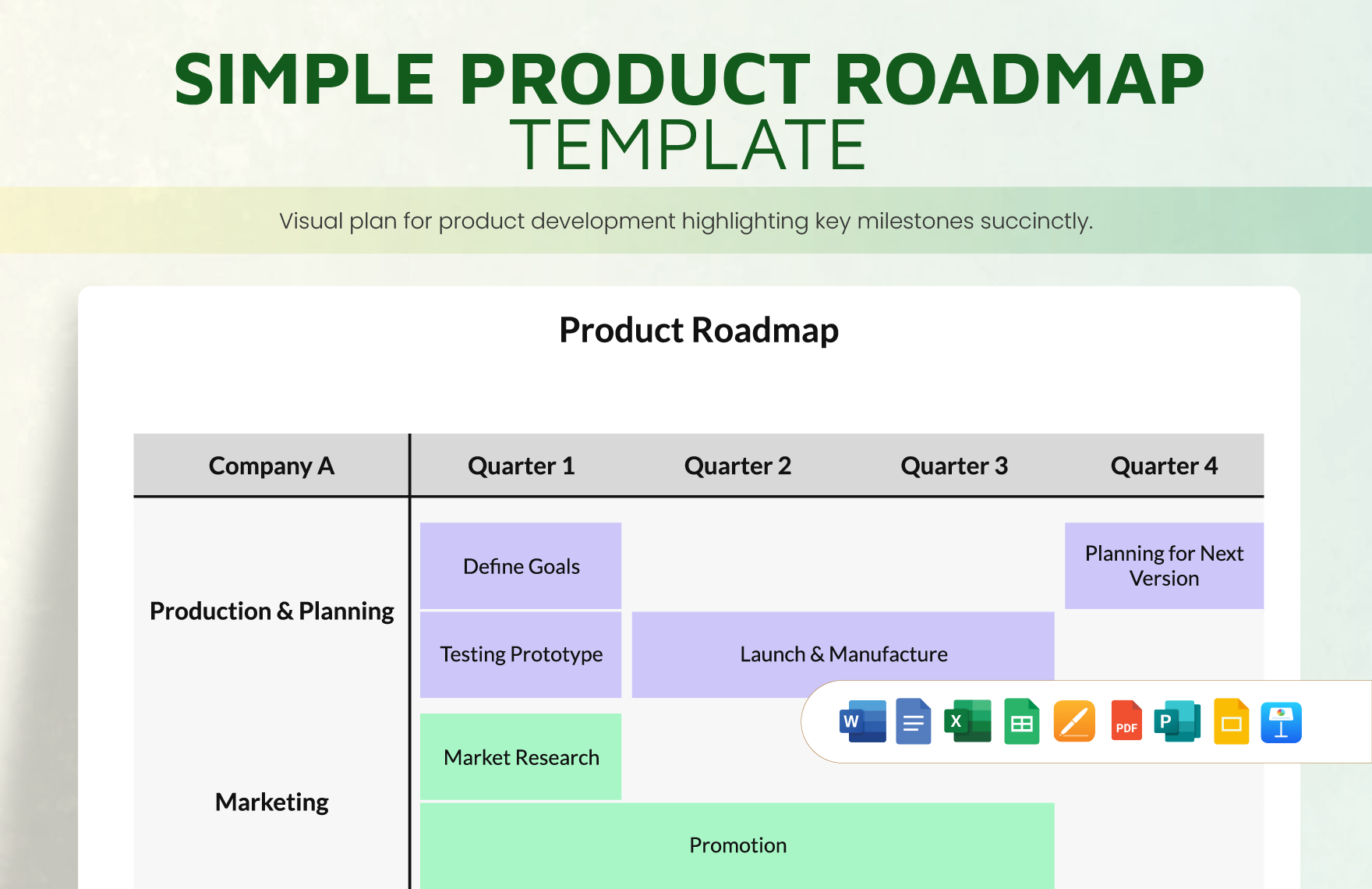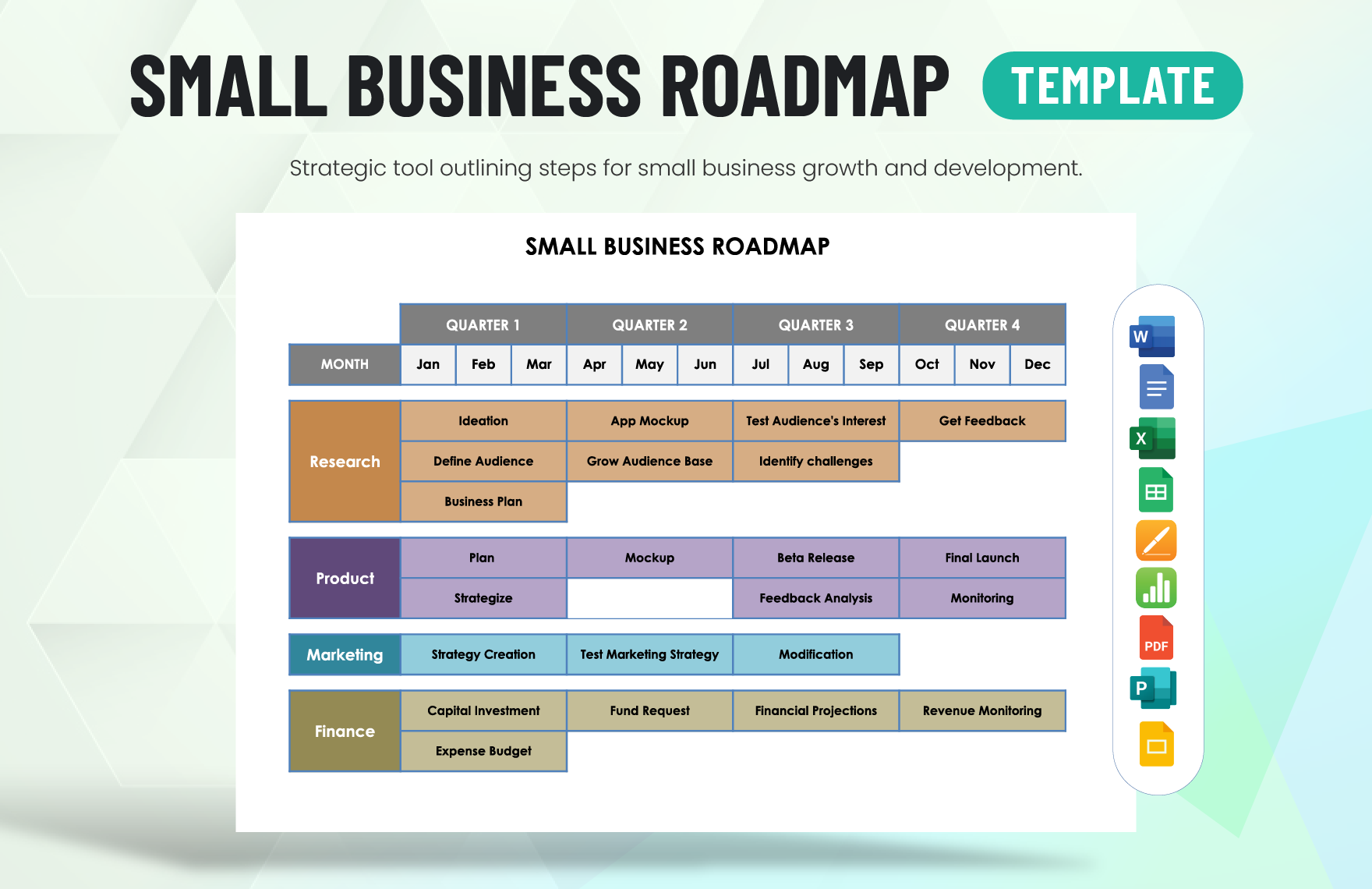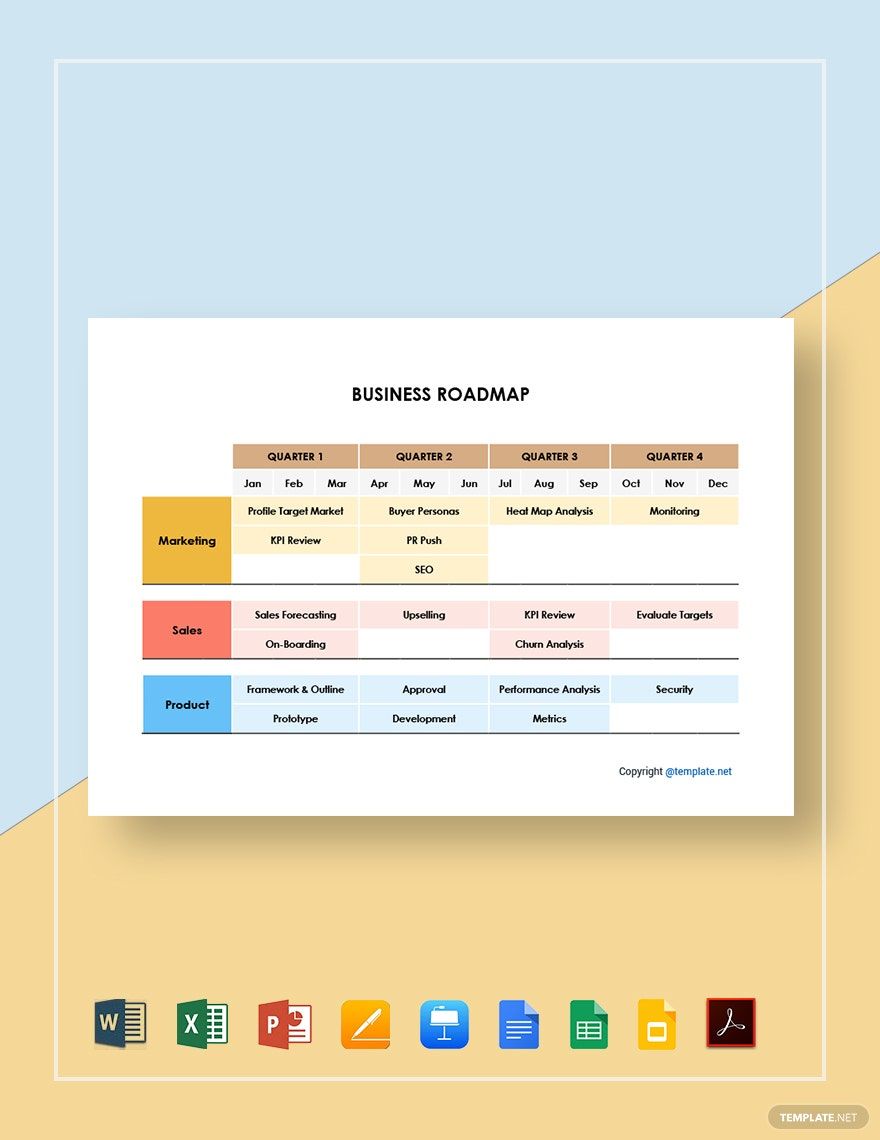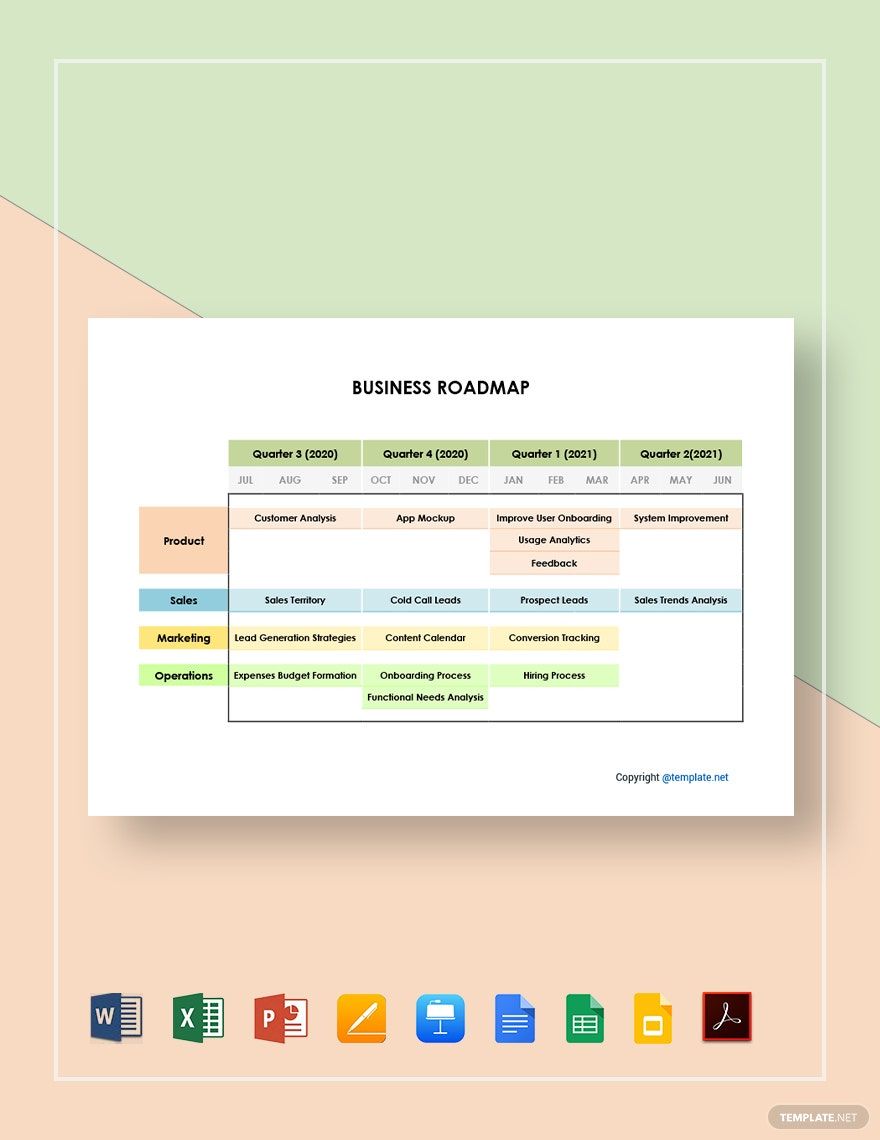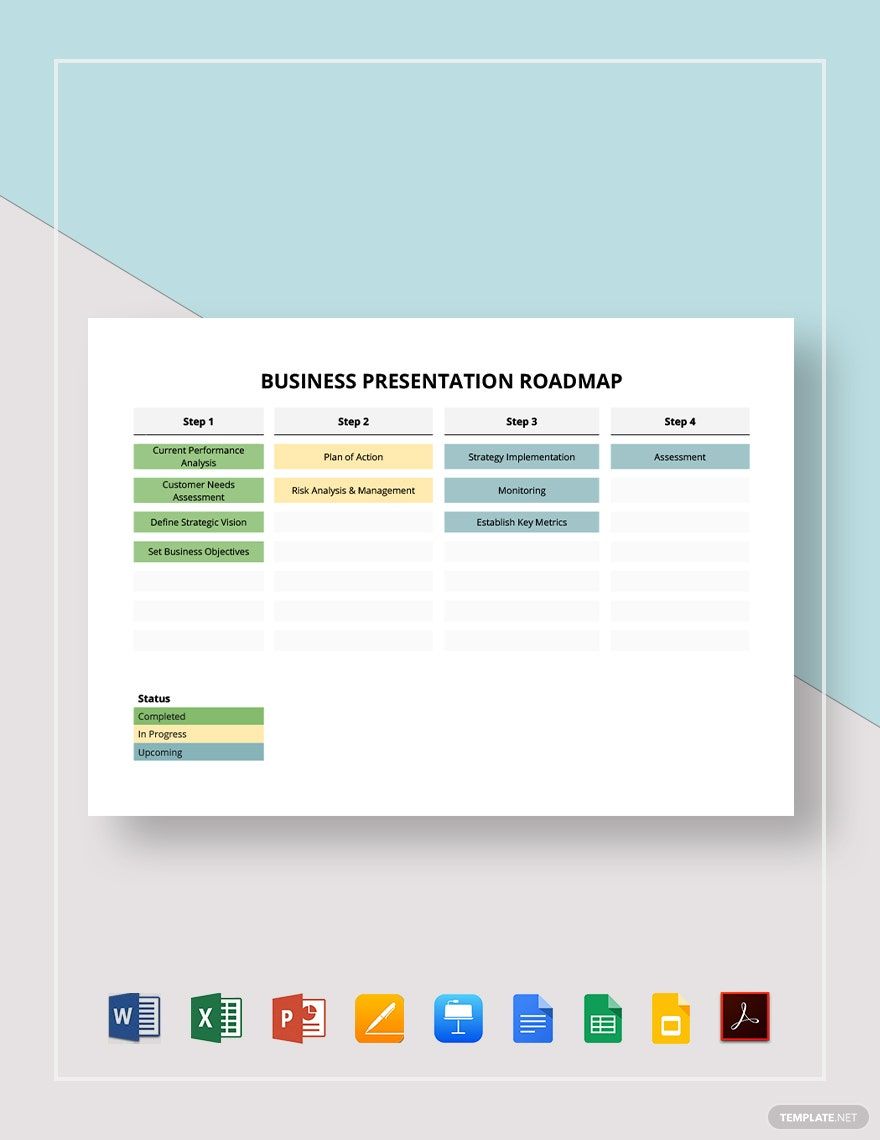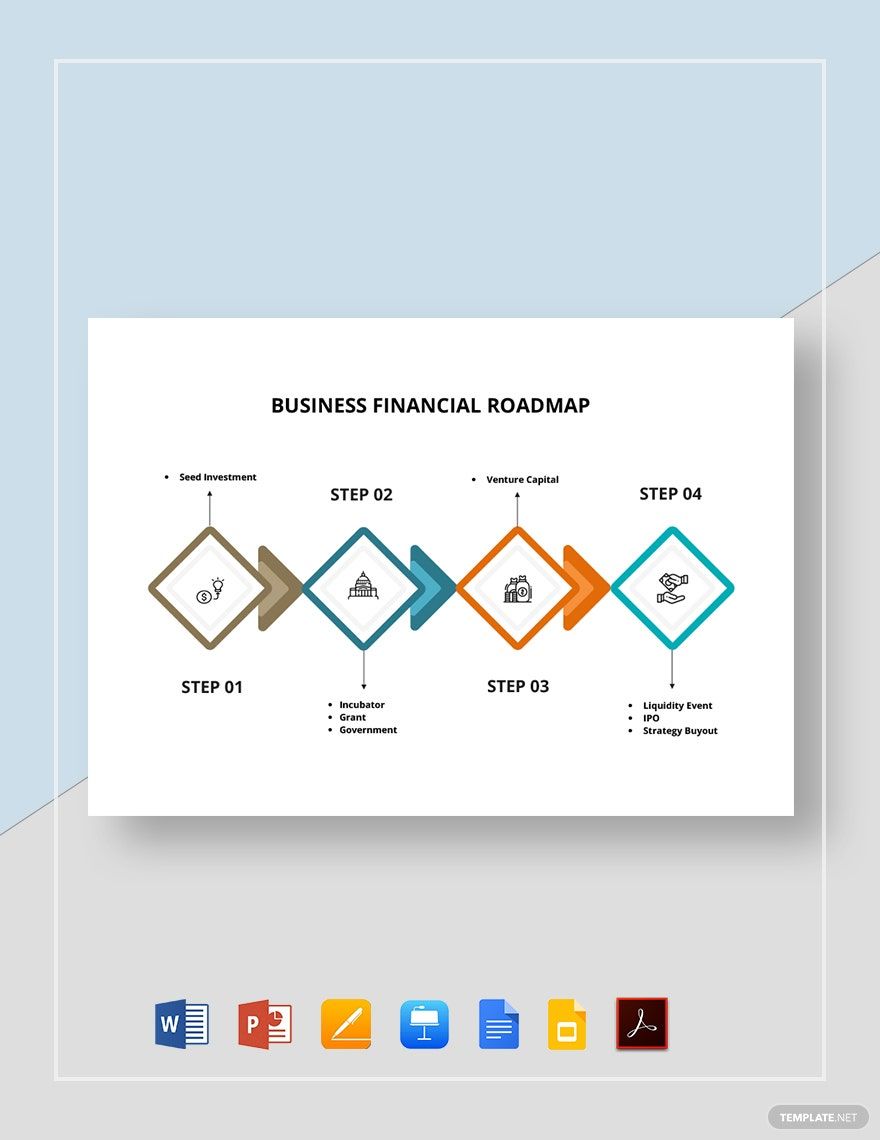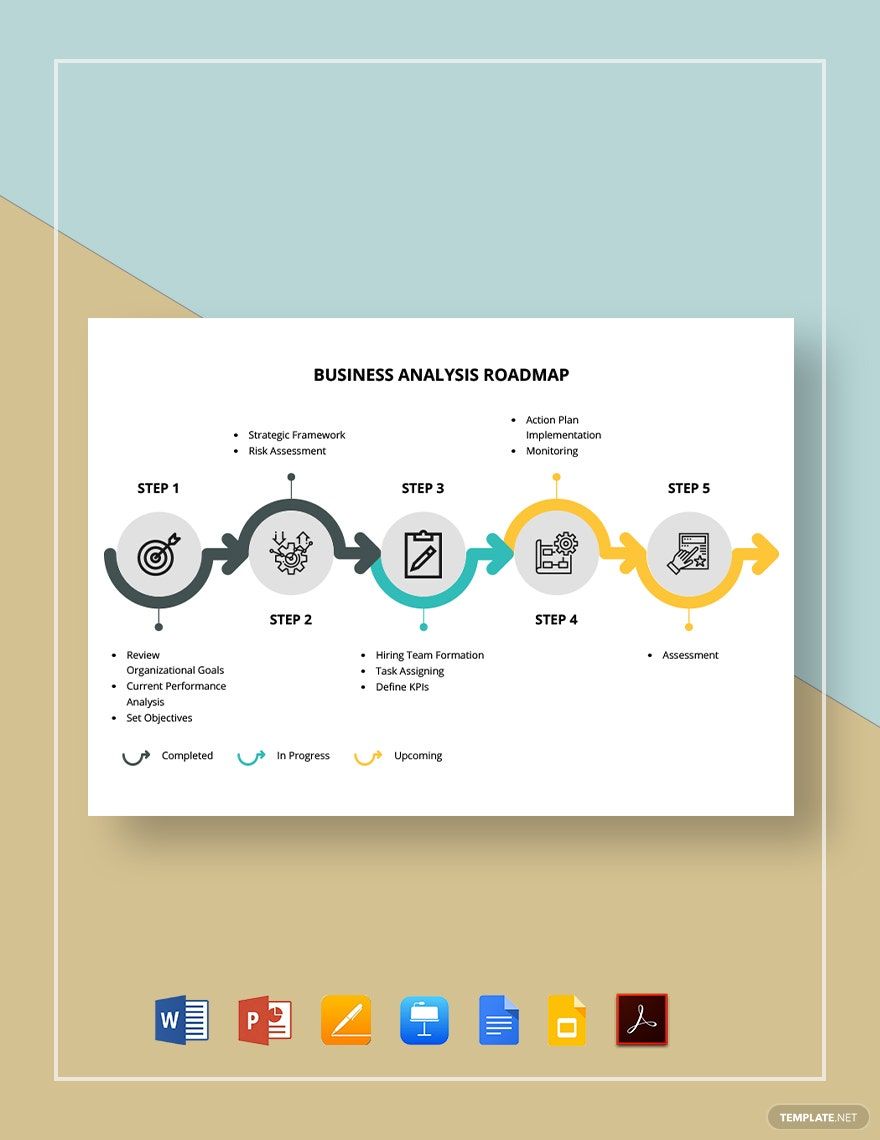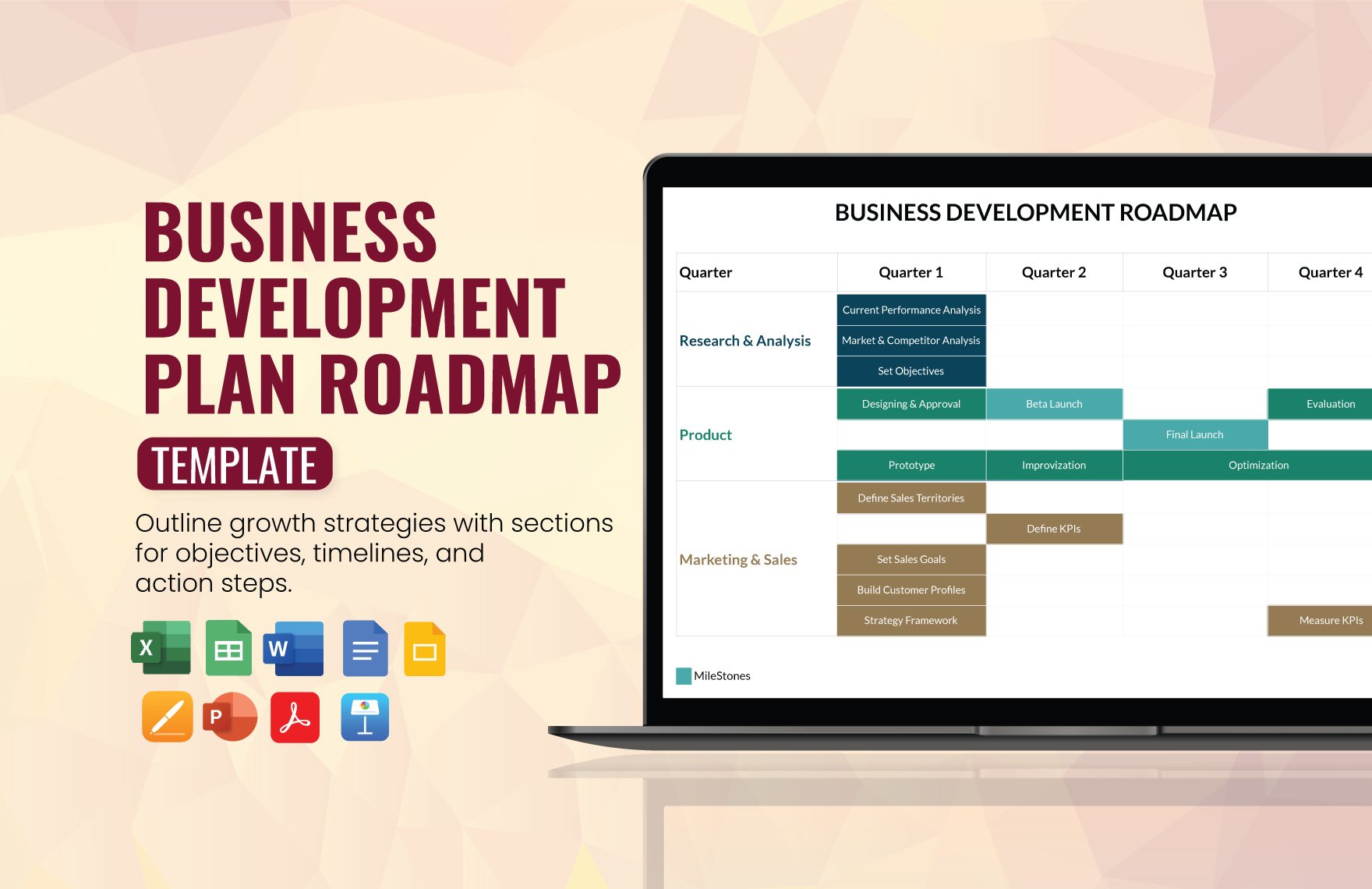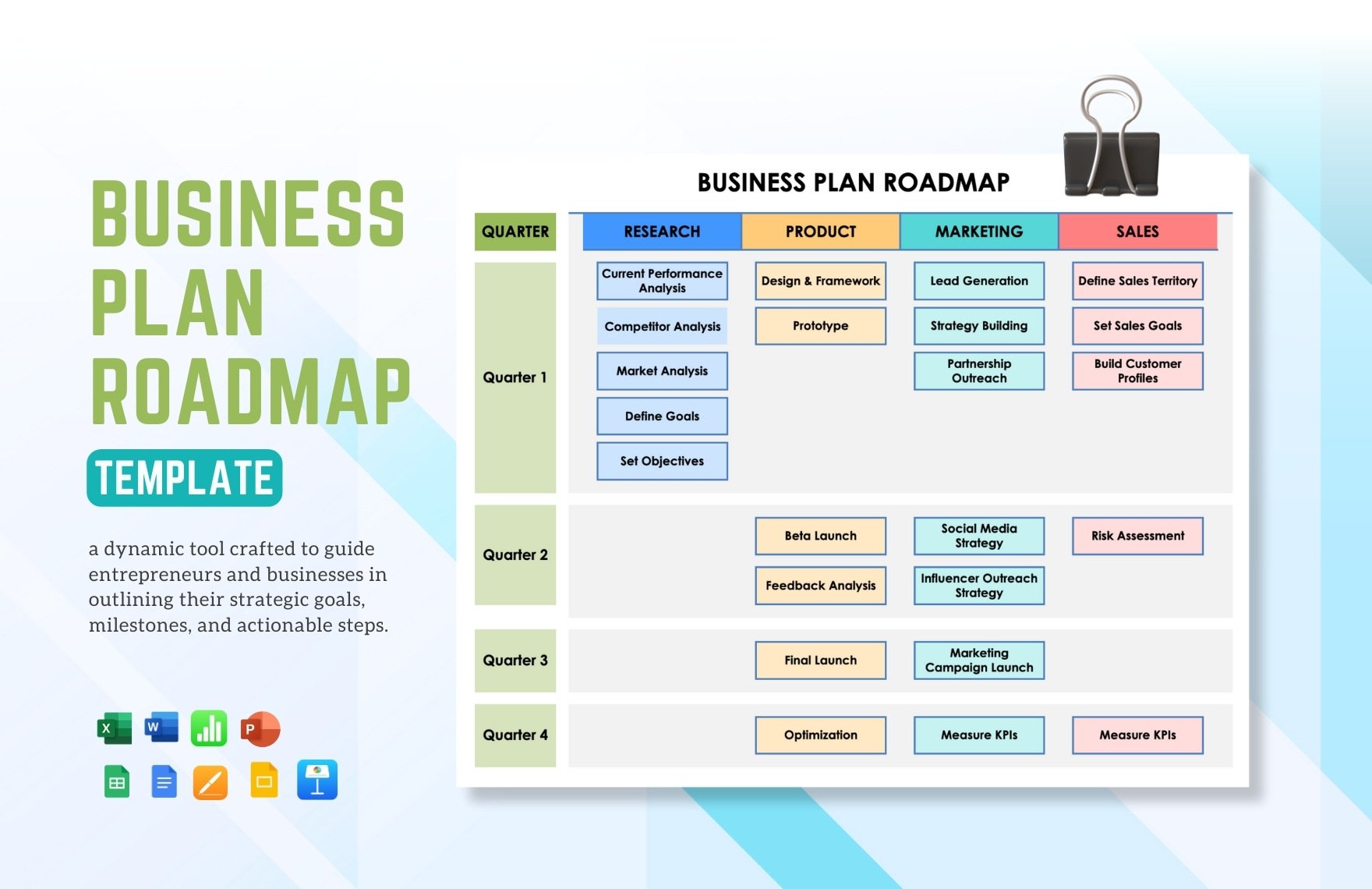Bring Your Strategic Vision to Life with Business Roadmap Templates from Template.net
Keep your team engaged, align stakeholders, and map out your business strategy seamlessly with Business Roadmap Templates from Template.net. Designed for business leaders and project managers who want to clearly communicate their strategic initiatives, these templates allow you to effectively outline project milestones and key objectives. Whether you are planning a product launch or outlining your company's growth strategy, these templates make it simple. Each template includes versatile, customizable layouts with space to insert critical information like timelines, goals, and responsible parties. You don't need any advanced design skills to create professional-grade roadmaps, and with free options available, streamline your strategic planning with ease.
Discover the many Business Roadmap Templates we have on hand, tailored to suit a range of industries and strategic needs. Choose from various templates, easily swap in your company’s branding, and tweak the color schemes and fonts to reflect your corporate style. Enhance your presentation with drag-and-drop icons or graphics, and capture attention with optional animated effects. With user-friendly, AI-powered text tools, the creative possibilities are endless, enabling anyone to create informative, compelling roadmaps effortlessly. Plus, with new designs added regularly, you'll always find fresh inspiration. When you've finished crafting your roadmap, download it or share it with your team via print, email, or export—a surefire way to engage your audience across multiple channels.

